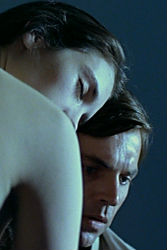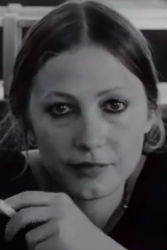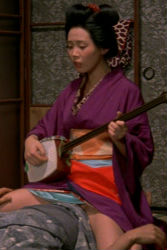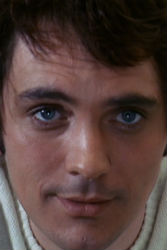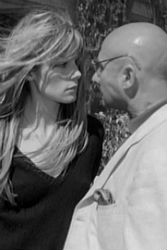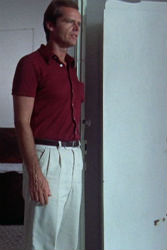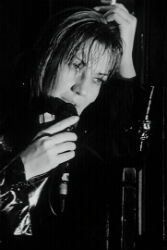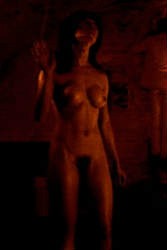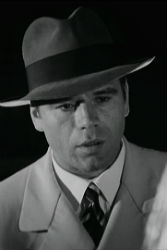CUL-DE-SAC
Roman Polanski, 1966

Paul Coates on Cul-de-Sac (Roman Polanski)
CUL-DE-SAC IN CONTEXT: ABSURD AUTHORSHIP AND SEXUALITY
Posted by kind permission of Paul Coates, Professor Emeritus of Film Studies, Western University (Canada)
Abridged from Paul Coates, ‘Cul-de-Sac in Context: Absurd Authorship and Sexuality’ in The Cinema of Roman Polanski: Dark Spaces of the World, ed. John Orr & Elzbieta Ostrowska (London: Wallflower Press, 2006) pp. 97-107
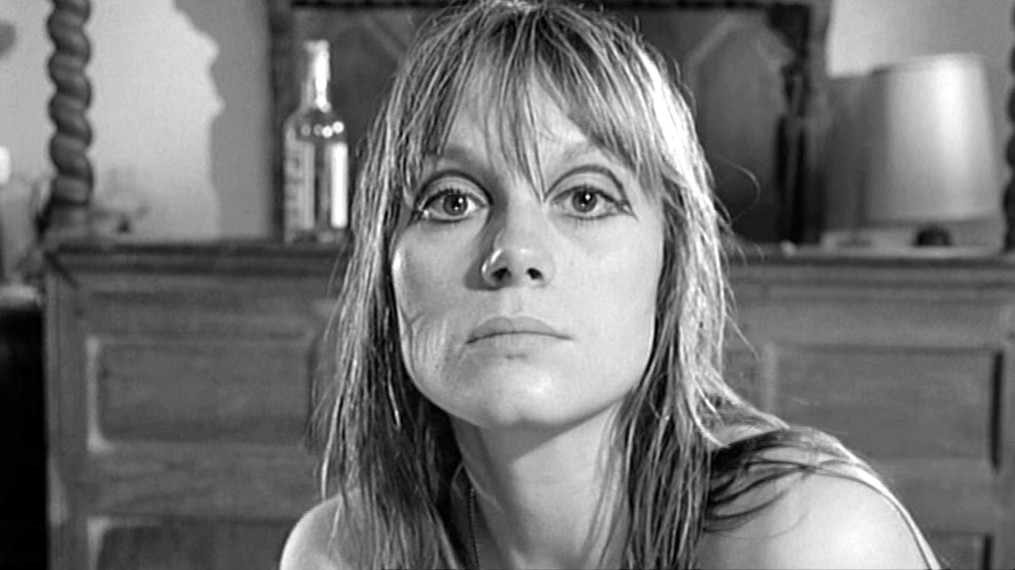
Françoise Dorléac, Cul-de-Sac, Roman Polanski
I. Cul-de-Sac: An Open-Air Theatre of the Absurd
Cul-de-Sac can be situated in the Polish and European absurdist tradition, to which it is arguably the most closely related of all Polanski’s features. It exalts a principle of the perverse that is no longer individualized, as in surrealism, but universal and impersonal. The shift from surrealism, a formation whose heyday had been in the 1920s and 1930s, to the absurdism that dominated the late 1950s corresponds not only to Polanski’s situation at a particular historical conjuncture but to the irretrievability of a surrealist moment whose hopes of social liberation through the unfettered individual unconscious had proven utopian in the face of the nightmarishness of fascism’s malign liberation of a collective unconscious. Absurdism restates the surrealist case for the necessity of revolution by documenting a societal encasement in deadening clichés, but in its post-war Adornian ‘administered world’ their chains are far harder to shake off, as they shackle vast tracts of the individual’s inner landscape. Moreover, that landscape is more lunar than volcanic: the dead place of boredom that breeds fantasies of (and then actual) torture as relief.
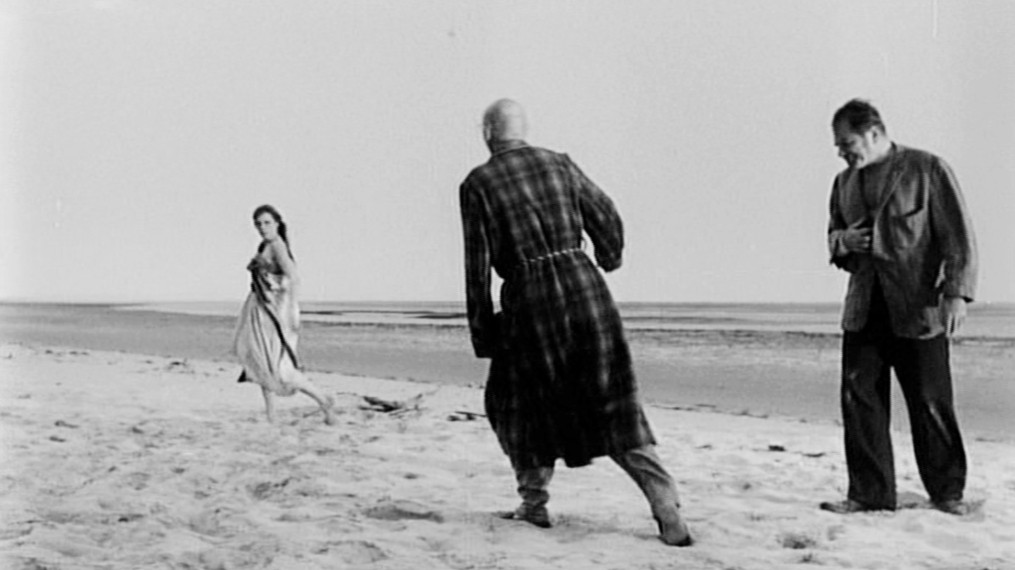
Françoise Dorléac, Donald Pleasence & Lionel Stander, Cul-de-Sac, Roman Polanski
Dickie’s appearance as a parodistic incarnation of the American gangster breathes an absurdist sense of life’s suffocation under dead languages, which he appropriates mockingly to render George the mirroring cliché that reinforces him by inversion: that of the affected, effete Englishman. It takes a cliché not only to catch a cliché but also to generate its counterpart. The consequence is that George’s every word faces the possible indignity of derisive quotation as a sign of Englishness, wealth, class and presumed snobbishness and effeminacy. Thus Dickie mocks George’s use of ‘one’ by stating that ‘one does not choose the time one gets into trouble’, or counters his complaints of the cold by instructing Teresa to ‘fetch him his mink’. No longer expressive of his individuality, George’s language writhes in the impotence of simply strengthening Dickie’s position.
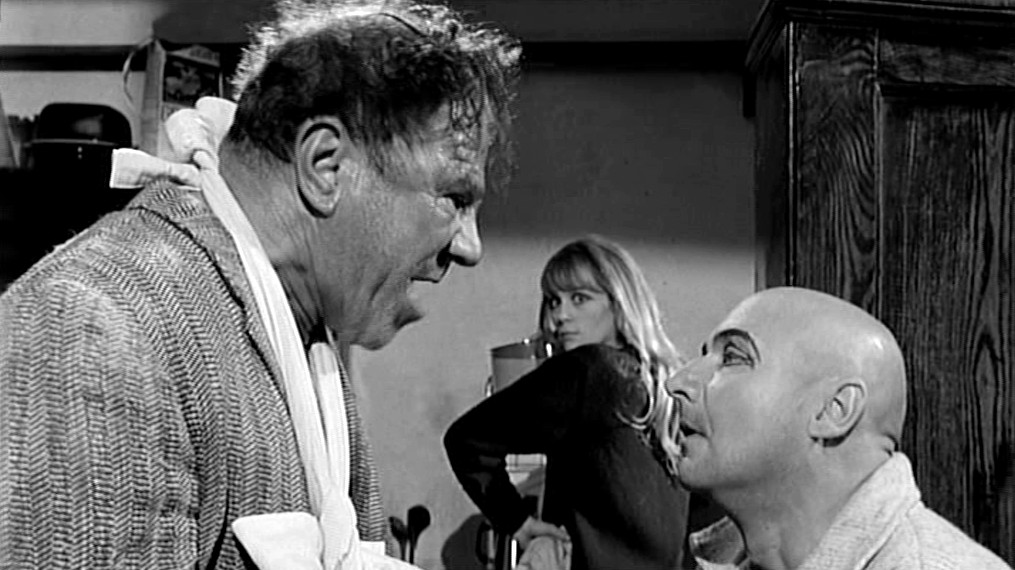
Lionel Stander, Françoise Dorléac & Donald Pleasence, Cul-de-Sac, Roman Polanski
After his brief flirtation with surrealism in his first short, Two Men and a Wardrobe, absurdism is the form of modernism that marks Polanski’s work: not the formal modernism of the Nouvelle Vague, with its radicalization of narrative modes, but one that problematizes spectator/text relations—to say nothing of ‘identification’—through the unease of black comedy and unpredictably shifting gender roles and power-plays. Polanski’s is the urgent modernism of shock, solitude, paranoia and trauma, not the formalist (and largely French) one of narrative play.
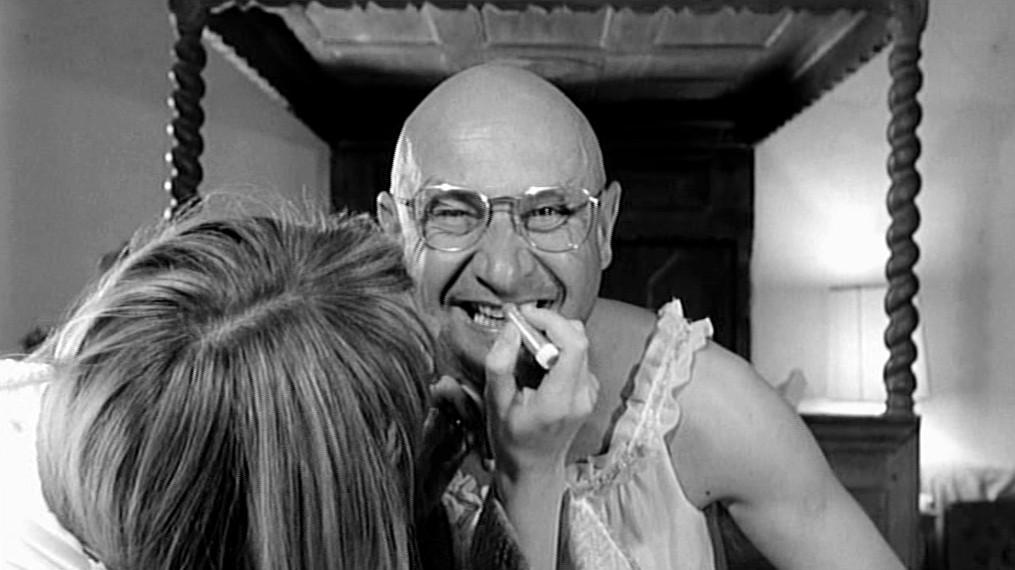
Françoise Dorléac & Donald Pleasence, Cul-de-Sac, Roman Polanski
Polanski’s presentation of sexuality can be linked to the comparison with Beckett, particularly Endgame: the fact that there is less tenderness between Teresa and George than between the gangsters (particularly on the side of Dickie, who has a pet-name for Albie) echoes the Endgame set-up, in which Hamm and Clov are inseparable while the married couple are in the dustbin. What is foregrounded here is less the tramps’ ‘way of compassion in degradation’ in Waiting for Godot than Lucky and Pozzo’s ‘way of domination and dependence: relationships which can only be reversed’. This inversion indicates Cul-de-Sac’s greater proximity to Endgame, which itself musically reverses the emphases of Waiting for Godot by foregrounding the dominance/dependence relationship. At the same time, though, the non-arrival of Katelbach is of course reminiscent of Waiting for Godot, and when Dickie and Albie discuss his anger in short, repetitive sentences, calling him only ‘he’, this is uncannily like the dialogues of Vladimir and Estragon, particularly when Albie concludes ‘he doesn’t love us any more’.

Lionel Stander & Jack MacGowran, Cul-de-Sac, Roman Polanski
As for the question of dominance, the camera’s frequent proximity to Dickie establishes identification with his point of view, while his solitary occupation of the image in the film’s early stages allows him to bulk large in it and control it.
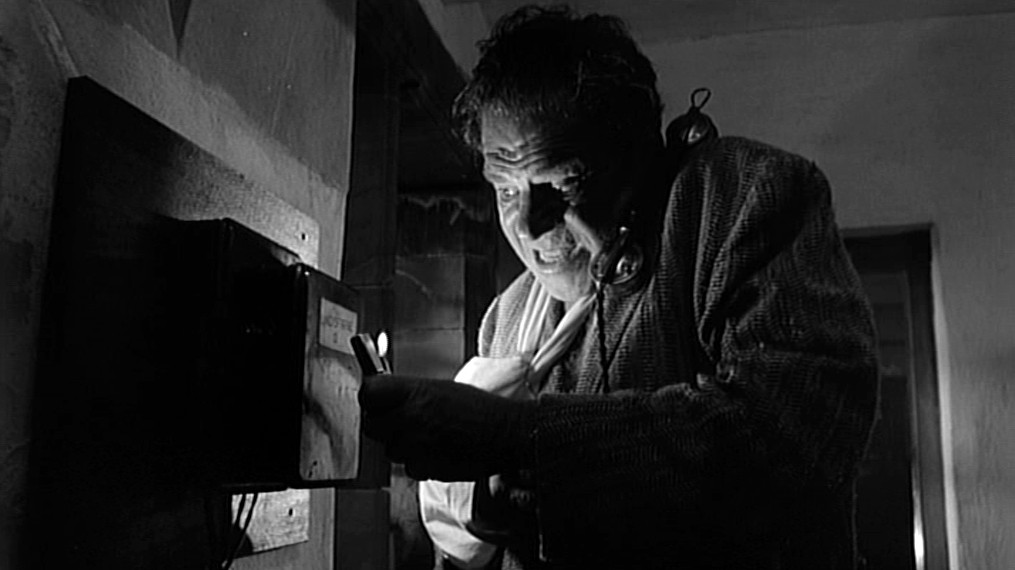
Lionel Stander, Cul-de-Sac, Roman Polanski
As noted above, Polanski’s absurdist modernism unsettles text/spectator relationships. His very first shot catches us off guard. A wide-open space, telegraph poles, a long straight road: the imagery suggests an American road movie. But then the title comes up—Cul-de-Sac—denying that the road goes anywhere. So much for the suggestion of wide-open spaces; the destination—the Holy Island castle inhabited by George and Teresa—will indeed be the narrowest of cul-de-sacs for the two arrivals, the place of their death. This too will be unexpected, as the gangsters are meant to destroy the guests.
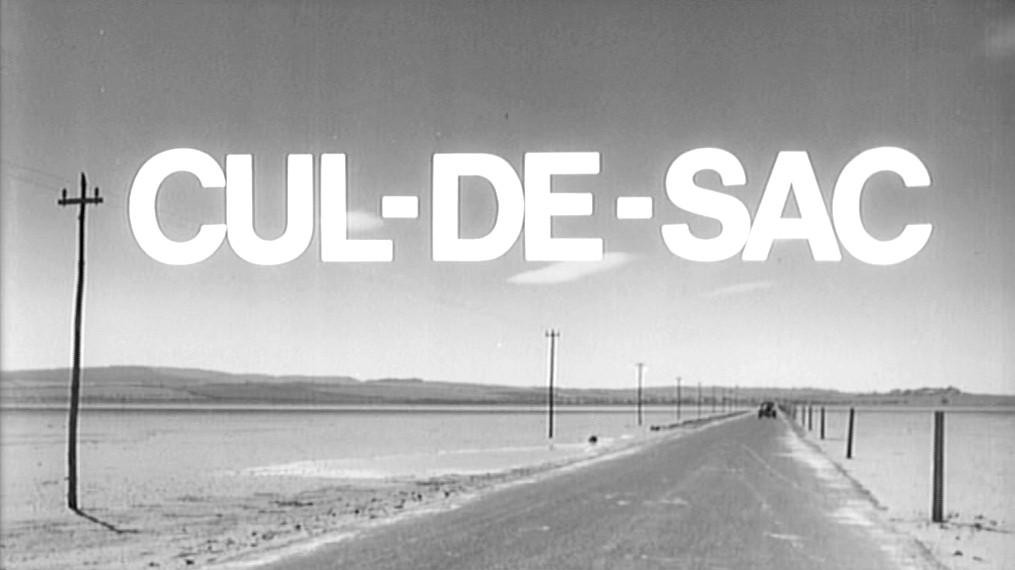
Cul-de-Sac, Roman Polanski
A car then comes up this road and sputters to a halt. Here too we are misled: shot from the front, it is not apparent from a distance that it is being pushed. Confusingly, in the context of the opening image’s play with and against classic Hollywood imagery, an American is pushing it and a Briton is seated within it, so the sense of place is suspended. There is a Beckettian extremity of character polarization that suggests the interdependence, inseparability and mutual reinforcement of stereotypes, as well as grotesque comedy (the grotesque being for Bakhtin the co-presence of two bodies within one): one large and American, one diminutive and English; one burly and insensitive, the other bespectacled and fastidious.
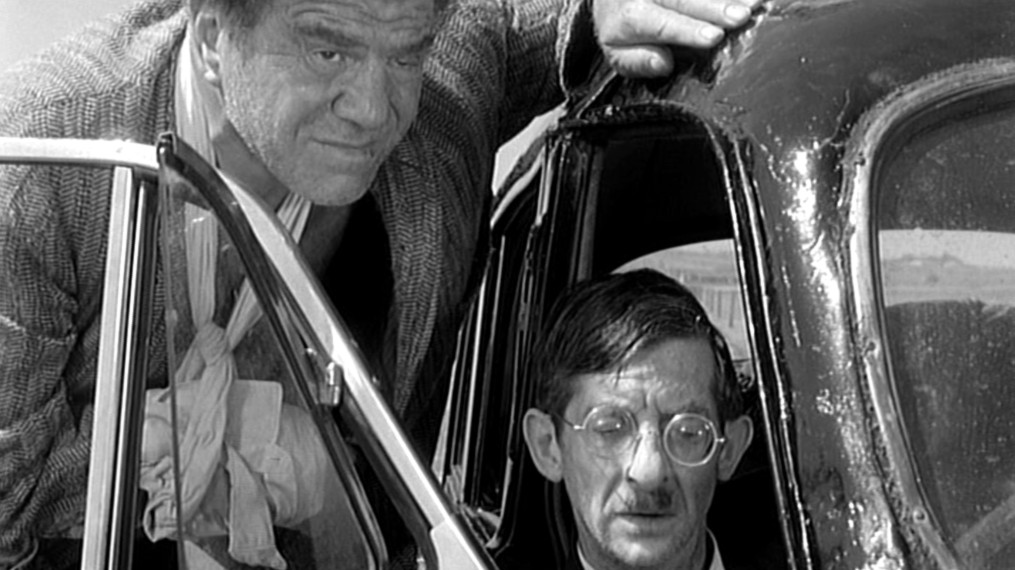
Lionel Stander & Jack MacGowran, Cul-de-Sac, Roman Polanski
When the latter says, ‘here we are’ (even though they are in the middle of nowhere) it has the gnomically ex cathedra air of one of Hamm’s pronouncements in Endgame. The little man is just as immobile as Hamm, while the contrast with the American’s mobility also resembles the Hamm/Clov relationship, though later, when Dickie literally becomes a servant—the butler—the film’s mode will shift as his imperious grasp of an etiquette he then throttles point by point recalls the Losey-Pinter The Servant (1963). As the car moves forward, we start at what sounds like a gunshot. Again, our expectations are deflated, as it turns out to be the car hitting the roadside post that immobilizes it definitively.

Lionel Stander & Jack MacGowran, Cul-de-Sac, Roman Polanski
Polanski’s later play with expectations and the non-sequitur does not always involve such instant reorientations. Nevertheless, the speed with which interpretive frames have to be tried and discarded in this overture has engendered a lingering edginess. As in comedy, one expects the unexpected. However, the impossibility of establishing even an approximate knowledge of when the unexpected is likely to come renders it not so much funny as an insistent source of anxiety. As in Beckett, both the humour and the blackness derive from a suspicion that the worst (metaphorically represented by the failed, unseen heist) has already happened somewhere else. The unease is due to not knowing quite when the reverberations of this event—like Katelbach—will reach one.

‘The worst has already happened’: The ‘Chicago typewriter’ digging into Albie’s back
Like a creature hunting prey, Cul-de-Sac secures the apparently extra-absurdist reality into which we think we escape when Dickie leaves the car and draws it back down a slope and into the hole of its absurdist starting point: it documents the last days of a humanity that may be in the process of becoming an insect but which (unlike Gregor Samsa) has not yet woken up to the fact. (The idea of escape from enclosure is undermined systematically.) The closest to such transformation is surely George. In the presence of Dickie, his baldness renders his frequently un-coordinated, rubbery writhings—his combination of pipsqueak ex-military self-assertion and subsequent spineless grovelling—a stage in his metamorphosis into a rubber-man. The closest to losing the name of human, this central figure is the locus of identification in our worst, most masochistic dreams.
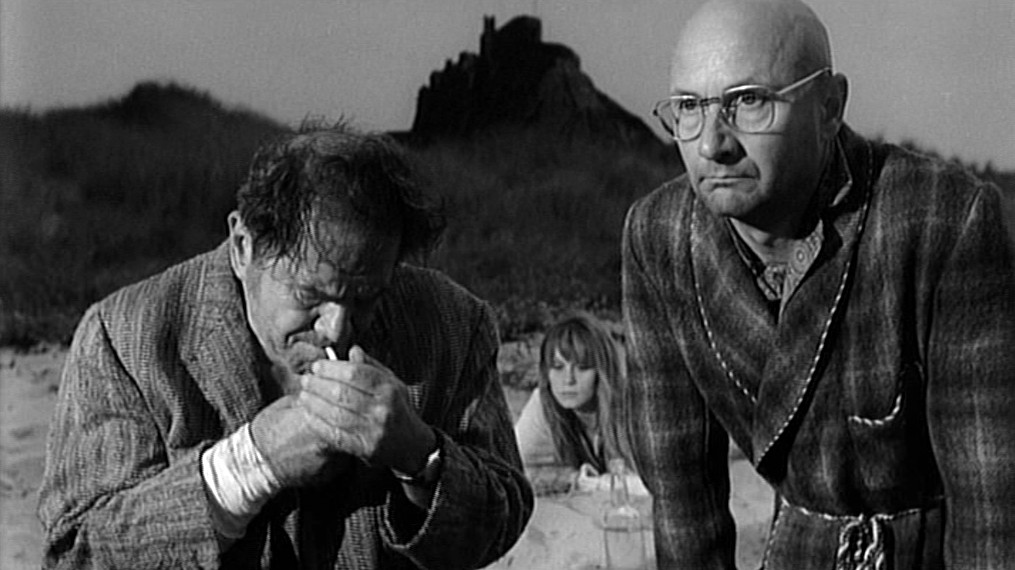
Lionel Stander, Françoise Dorléac & Donald Pleasence, Cul-de-Sac, Roman Polanski
II. Cul-de-Sac: The abyss of sexuality
Throughout Polanski’s work, the scene of postponed, ever-imminent menace yields occasional blatantly masochistic fantasies that hope and pretend that the worst has already happened elsewhere, has been confronted already. But in fantasies like those of The Tenant or The Fearless Vampire Killers, the slightly hysterical air (the nervousness and absurdism of a laughter surely linked to castration anxiety, ‘black comedy’ being the euphemism for the unfunniness of anxiety) betrays the fact that they have not seen off the menace, only identified with a lesser aggressor in the hope of appeasing a large one, as if cutting off a finger in a token, smaller sacrifice meant magically to preserve one’s life. The males who suffer degradation and even literal feminization in these films are deprived of the phallus: of the knife that always exists in proximity to water, the site both of its loss and of its cleansing. The knife is the phallus as object of contention, which can pass from hand to hand: in Repulsion, Carol wields the slasher’s razor.
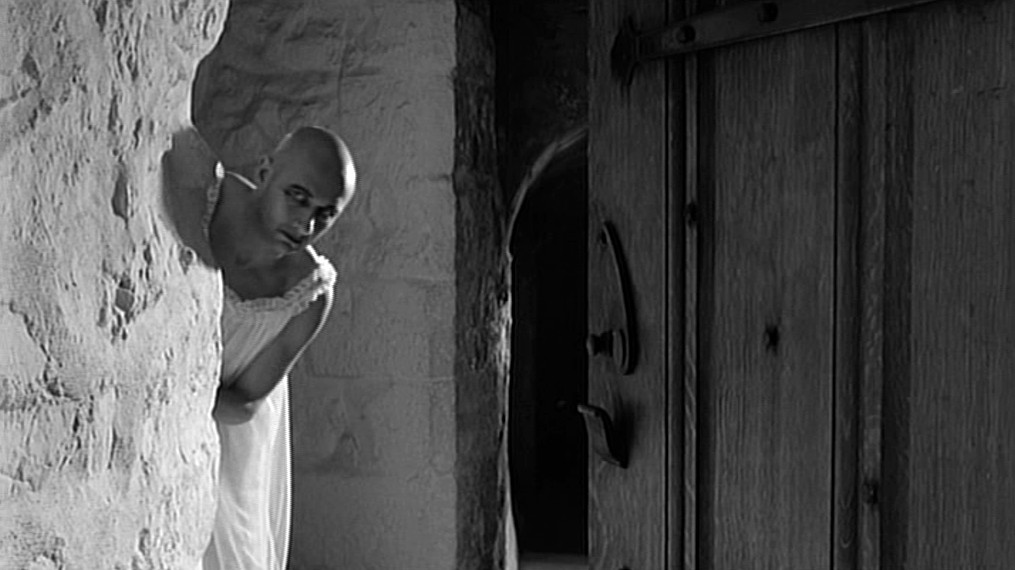
Donald Pleasence, Cul-de-Sac, Roman Polanski
Linked to the knife, and guided by an exploratory libertinism, sexuality takes a nightmarish wrong turning: the knife penetrates the wrong part of the body, or seeks penetration where none is possible, and violence becomes the bloody underside of sexuality as triumph of the will. Another way of saying this is to state that the knife is not just—in what would otherwise be a tedious sub-psychoanalytic cliché—‘phallic’, but that it is a phallus that needs to be particularly penetrative, and yield blood: in other words, one capable of rupturing a hymen (the significance of young girls in a ‘Polanski’ imaginary that is, unfortunately, and notoriously, partly correlated with the biographical in the popular imagination). Its bloodiness makes it also the sign of a historic violence that feminises the victim.
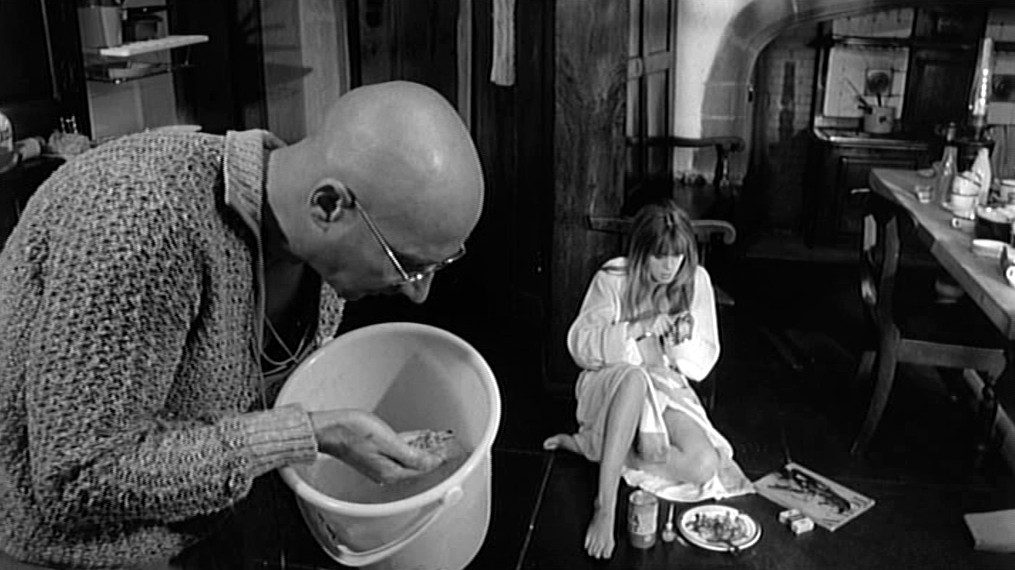
Donald Pleasence & Françoise Dorléac, Cul-de-Sac, Roman Polanski
The greatest danger the knife confronts is embodied in a water that becomes a projection of a femininity the male can never satisfy (its gendering as such being of course a cultural reflex of the sea’s linkage to the periodicity of a moon that in its turn echoes that of the menstrual cycle): it represents the abyss of feminization the knife can open up, into which the male may fall, but which also offers the best disguise after the violent deed, that of the cross-dressing protagonists of Cul-de-Sac and The Tenant in particular. When the period in hiding is over, the knife-wielding Polanski of Chinatown doubles as a Macduff who rips open his mother’s womb to escape its reeling, suffocating night, the claustrophobia that runs through so many of his works, by releasing the waters.
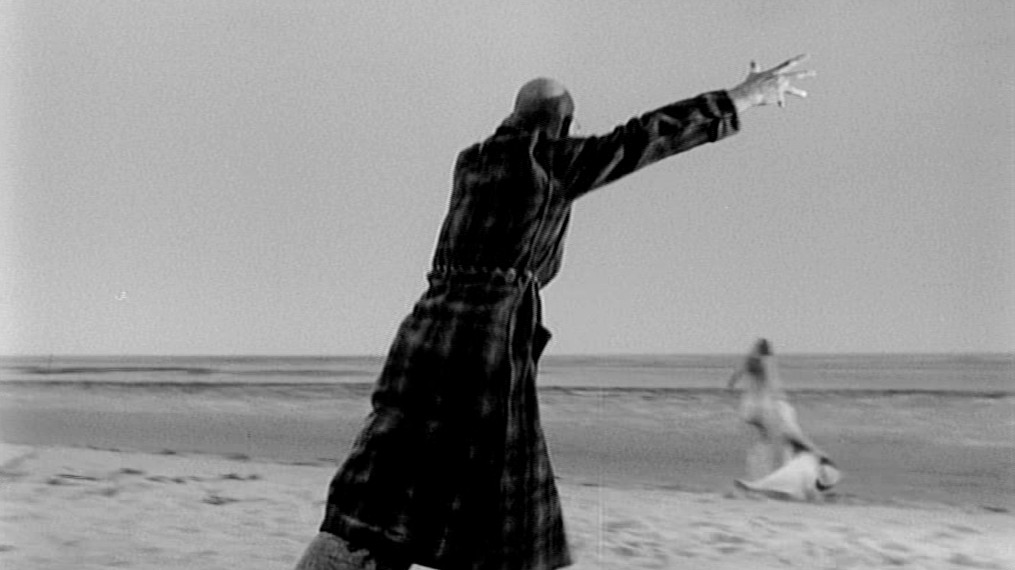
Donald Pleasence & Françoise Dorléac, Cul-de-Sac, Roman Polanski
Cul-de-Sac suggests a form of defense against these fears that attributes it to an older man who is in a sense already emasculated. Its projection onto an older man indicates its irrelevance, and hence the possibility of its comic treatment.
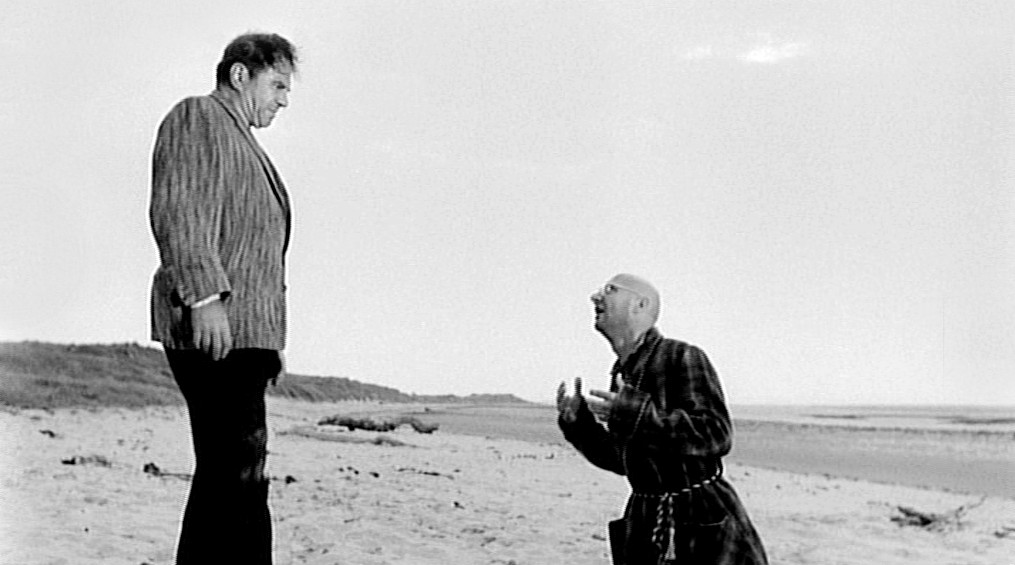
Lionel Stander & Donald Pleasence, Cul-de-Sac, Roman Polanski
If George is presented as already emasculated, near-hysterical, kept firmly in his place by Dickie (at one point he and Teresa are held in the frame of a distant door, as if cages, while Dickie warns against hysteria), the habitual way in which Teresa’s body appears before him is also worth considering. Its repeated shooting from behind as she moves or runs away from the camera creates a bitterly masochistic sense of Teresa turning away from her hapless worshipper, who is unworthy of her. As so often, the turned back raises questions of power: the woman’s over the man, the man’s over the woman. The sense of George’s emasculation is apparent in his making up and dressing in drag by Teresa, the long beach sequence in which he fawns over Dickie, Dickie’s reference to him as a fairy and Albie’s description of him as queer and delirious mistaking of him for his wife Doris, or Teresa’s general mockery of him.

Donald Pleasence & Françoise Dorléac, Cul-de-Sac, Roman Polanski
III. Polanski’s women: an attempt at an identikit
Polanski’s women are often presented as also in a sense children. Both Tess and Michelle (Frantic) evoke a terrified child in the body of an attractive young woman; Repulsion concludes with a close-up of the photograph of Carol as a child; in Bitter Moon, Oscar defines Mimi as child-like; in Cul-de-Sac Teresa is described as a naughty child; and in Chinatown, mother and daughter are also mother and sister, so the older woman is almost doubly a child. This is not just a matter of the inevitability that links beauty and youth, or of Polanski’s 1960s concern with youth culture and the possibilities of exposure of silken skin (and with extreme isolation in a highly sexualized world whose liberation also means collapsed norms). Nor is it Humbert Humbert’s obsession with Lolita, the lure of rejuvenation through young starlet or trophy wife. What interests Polanski seems rather to be the child’s simultaneous vulnerability, intensity and vengeful capacity for cruelty.
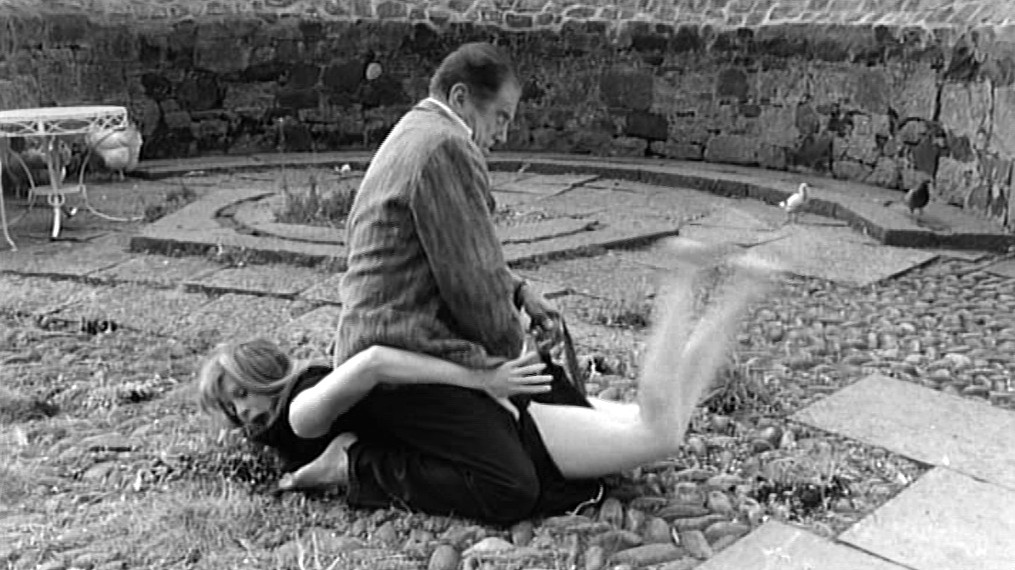
Lionel Stander & Françoise Dorléac, Cul-de-Sac, Roman Polanski
Moreover, beauty and cruelty go together, as beauty licenses cruelty and is itself cruel, of limited availability, justifying aggression in the scramble to secure it. The interest in the grotesque ascribed to the young in general may also play a role, as may Polanski’s own perennially youthful looks and stature and consequent willingness to identify with the youngest figure—who, in cinema, is usually a woman. Polanski’s delineation of a figure both vulnerable and potentially cruel is most developed in Bitter Moon, which may be taken as his fullest exposition of a tragic woman’s story that figures only fragmentarily in the other films. If children are vulnerable, female children are particularly so. In Repulsion, the final photograph of Carol among older men may hint at the cause of her psychosis. If this is so, then Chinatown may be the writing large of a nightmarish prequel to that nightmare. The intensity of the child’s reaction to suffering can then render it monstrously cruel in return: here again Bitter Moon gives the fullest image of how an older man renders a woman monstrous through his own monstrous behaviour.
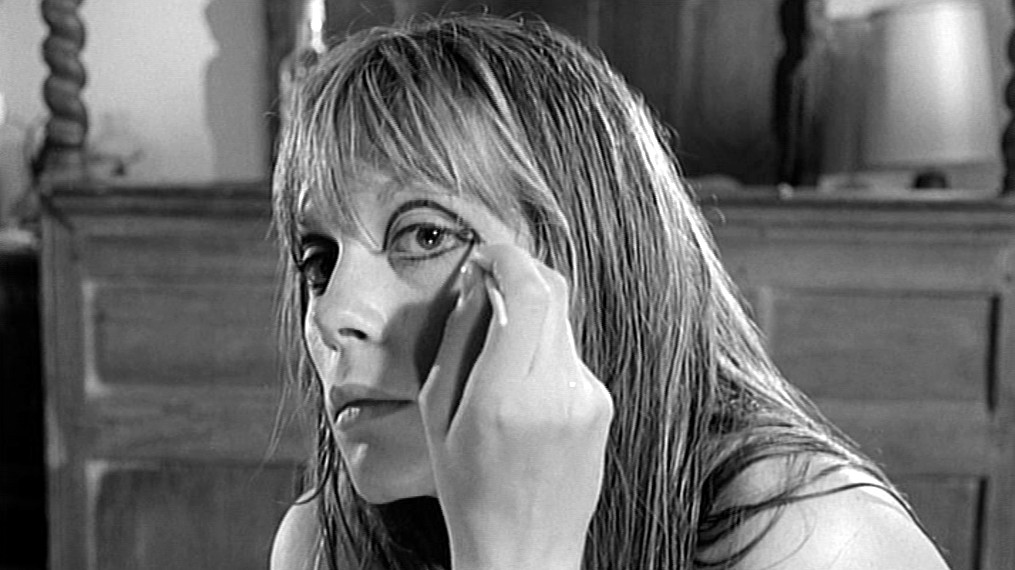
Françoise Dorléac, Cul-de-Sac, Roman Polanski
Cul-de-Sac, by way of contrast, gives the most fragmentary, least systematic, version of this itinerary, with no explanation of why Teresa is as she is. Teresa’s cruelty is cheery, almost debonair, and simply a given. It could be that the only explanation it requires is the appearance of George himself. This, in turn, though, may prompt questions regarding what may have united them in the first place—questions a more thoroughgoing absurdism would leave hanging, but which the greater commitment to realism in Polanski (and in most cinema) than anything found in Beckett or Gombrowicz allows to resurface. If George’s wealth is the obvious magnet, Teresa would be close kin to the ‘aspirational’ protagonists of Knife in the Water. There is no suggestion here though that the victimizer was herself once a victim, and it would be wholly illegitimate to attribute any such motives to her. She is just a snapshot in Polanski’s multi-part film about women.
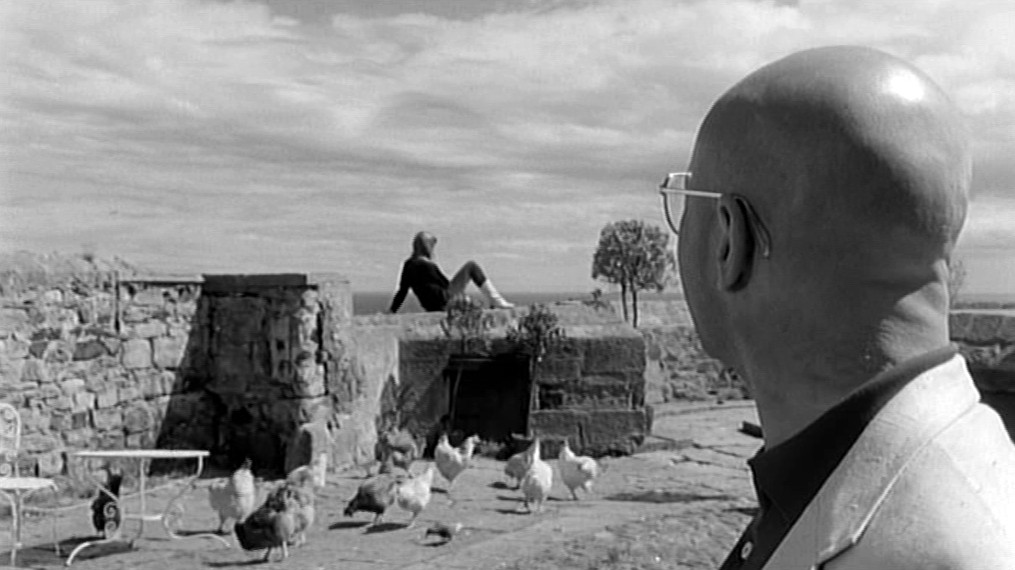
Françoise Dorléac & Donald Pleasence, Cul-de-Sac, Roman Polanski
Nevertheless, her cruelty may even have the same root as Oscar’s in Bitter Moon: disdain for the person who adores you, as George so clearly does. Although her boots and trousers may have been widespread mid-1960s chic(k) attire, they also belong with the imagery of sadism (a sadism absurdly reduced here to no more than an image, a ‘quotable gesture’): Nancy Sinatra boots that were made to walk all over you. If Teresa is also akin to Lady Macbeth, who also reproaches her husband with not being a man—her frustrated-child grizzling making Macbeth vulnerable to her urging—she is her transposition into a major key. Teresa’s frequent placement in the frame’s centre, behind and between the men, suggests the status of apple of discord, as in Knife in the Water. Unlike Knife in the Water, though, here neither man is bothering to contend for her. Cul-de-Sac stages the Oedipal triangle of the earlier film as an absurd non-event. The suggestions made by the image are stalemated by the actualities of the narrative.
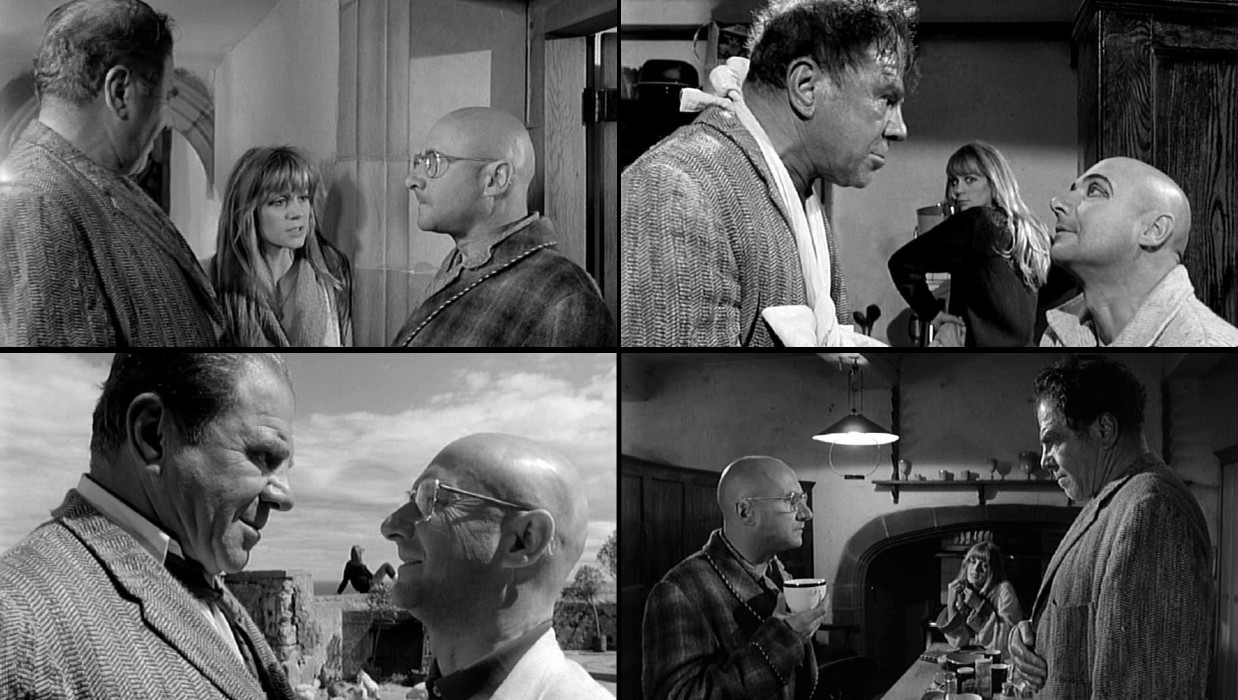
‘Teresa’s frequent placement in the frame’s centre, behind and between the men, suggests the status of apple of discord.’
IV. Cul-de-Sac: Language, exile and cliché
In Cul-de-Sac, the play with chickens and eggs is not only thematic, but also involves a Kafkaesque and dream-like literalization of cliché such as generates Metamorphosis, where Gregor Samsa’s transformation into an insect pictures a nightmarish enactment of what others may have said about him. Polanski’s play with this motif is more comically absurd than menacing. In one example of such play, George accuses Teresa of ‘egging him on’, of wanting to see blood, as she condemns his failure to protect her or the chickens. ‘You’re not a man’, she complains.

Lionel Stander, Cul-de-Sac, Roman Polanski
If all the eggs are in the fridge, this may also sum up the state of relations between George and Teresa: there is no hint of a wish for a child, a non-issue raised by the ten months of their marriage echoing the expiry of a term of pregnancy and by the appallingness of Horace, the child nobody would want. The occasional glimpses of pigeons and planes, meanwhile, suggest that the earth-bound chickens are the patron birds of the cul-de-sac: like George’s marriage, going nowhere. The tide rises around him at the end as if demanding his evolution into a creature capable of flight, his incapacity underlined by the insouciant passage of the regular airplane above.
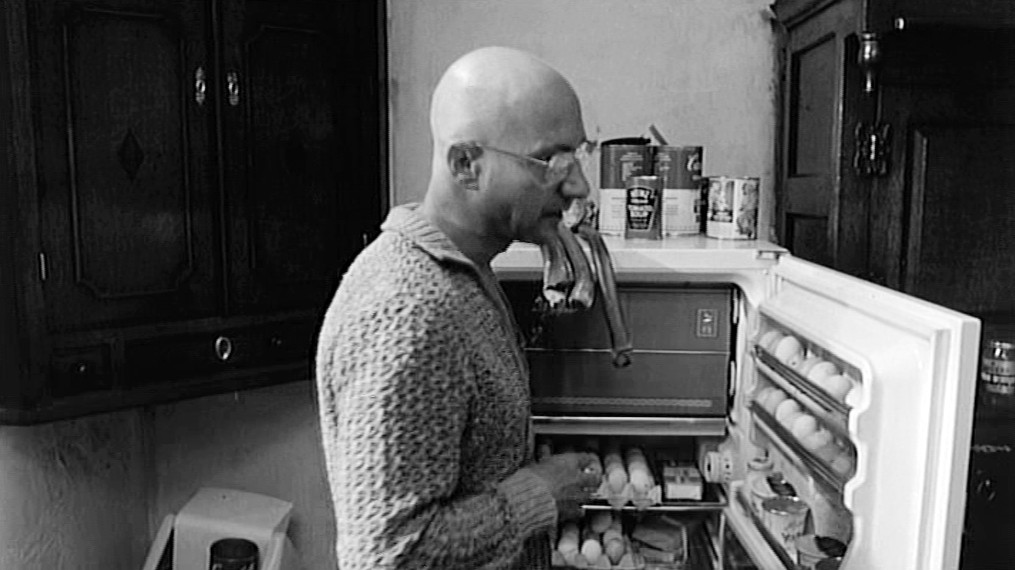
Donald Pleasence, Cul-de-Sac, Roman Polanski
In Cul-de-Sac, the multiple meanings of ‘chick’ and ‘egg’ are not a fulcrum of plot development and traumatic climax, and so can pass almost unseen and feel like embroidery. At the same time, though, all the characters’ idiolects clash, the most spectacular example being that between Dickie’s parodic gangster slang and Teresa’s heavily accented English. If these two foreigners are best placed to dominate it is because their awareness of the likelihood of being mocked themselves prompts them to get their retaliation in first and mock the natives, as they do most cogently with George whose Englishness blinds him to his own dislocation. The money that has bought him an out from his business has bought him out of reality too. His ignorance of his true position renders him patsy and cuckold.
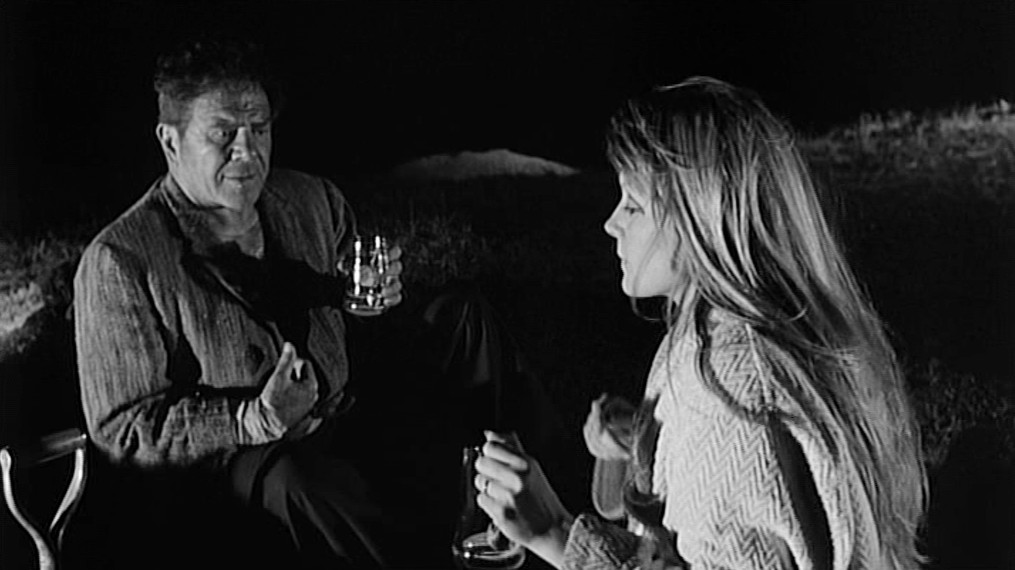
Lionel Stander & Françoise Dorléac, Cul-de-Sac, Roman Polanski
For if ‘the outlandish’ is comedy’s name for the foreign, Lindisfarne looks like its native home: the isolation of this spit of land renders everything foreign. Undecidability becomes the key feature of the place that is part of the mainland one moment, cut off from it by the tide the next. The consequent lack of an indigenous community becomes apparent in the difficulty of determining just how a dwelling located there should be described. Slightly uneasily, aware of the stiltedness of the expression, George himself calls it a fortress at one point, though it is also a former monastery, a place of literary composition and—in Dickie’s eyes—a prospectively fine site for orgies (the Sadean ‘secret place’). As if parodying the locution that deems the Englishman’s home his castle, the film shows a castle as a very unhomely home. No wonder it is abandoned eventually, the image of a culture without a rightful owner, the absurdist home one cannot have. It perches upon a rock as ridiculously as George himself at the end, as if he himself were its reflection in miniature—or a gargoyle blasted away by the explosion of the castle.

Lionel Stander, Donald Pleasence & Françoise Dorléac, Cul-de-Sac, Roman Polanski
PAUL COATES: THREE BOOKS
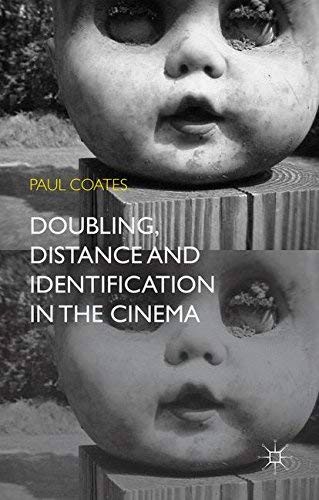
PAUL COATES
Doubling, Distance & Identification
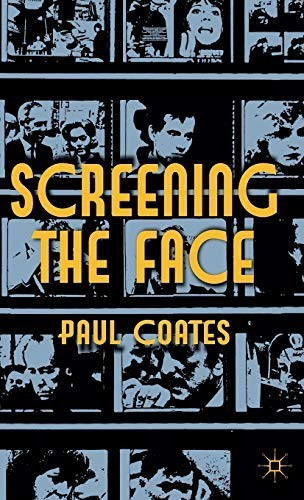
PAUL COATES
Screening the Face
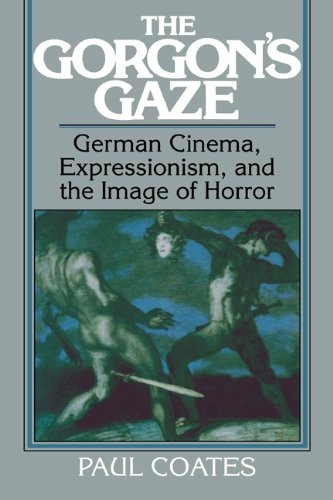
PAUL COATES
The Gorgon’s Gaze
ELZBIETA OSTROWSKA: THREE BOOKS
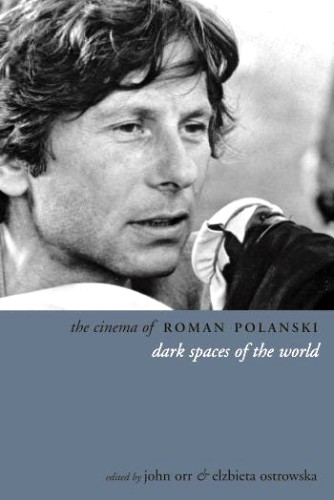
ORR & OSTROWSKA
Cinema Roman Polanski
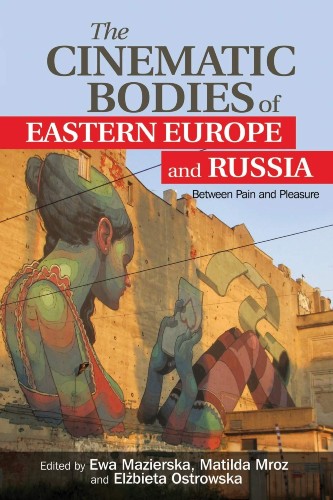
MAZIERSKA, MROZ, OSTROWSKA
Cinematic Bodies E. Europe Russia
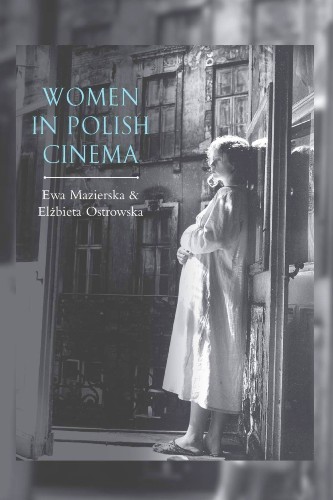
MAZIERSKA & OSTROWSKA
Women in Polish Cinema
CUL DE SAC (ROMAN POLANSKI): DESIRE AND ITS DISCONTENTS
Richard Jonathan
Poor George. How did he end up like that? Sitting on a rock, hugging his knees and crying, while the flooded strand and leaden sky draw the night in around him? His wife gone off with a stranger, the sanctuary of their island castle now a monument to her absence? How?
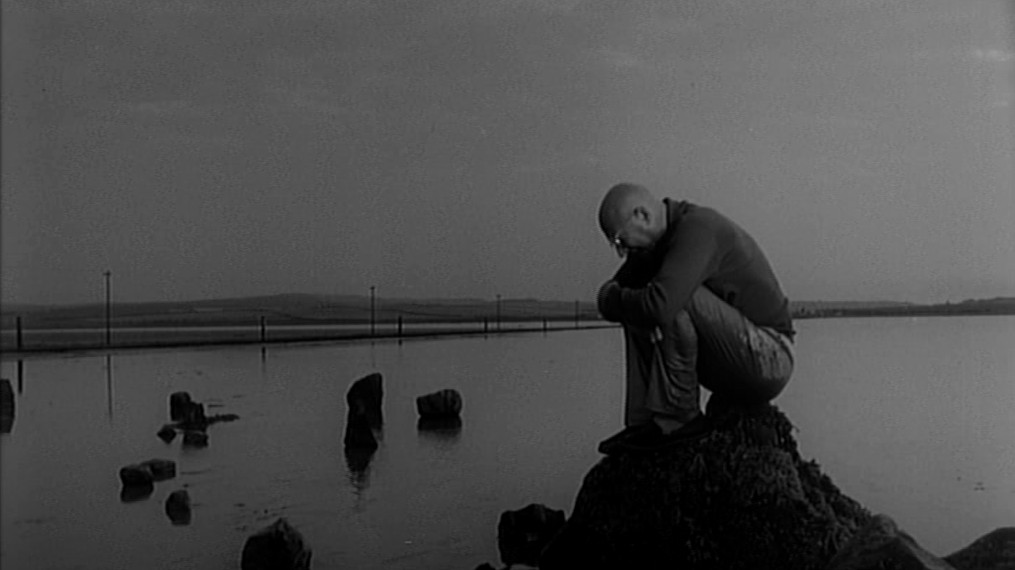
Donald Pleasence, Cul de Sac, Roman Polanski
Cul de sac is a portrait of a marriage, a black comedy of desire and its discontents. A 45-year old man besotted with love for his 24-year old wife has bought a castle where he hopes to live out an idyll. How to make a triangle in such a remote place (every couple needs a third person to reveal them to themselves)? A handsome young man making occasional visits will do, as will an injured gangster seeking refuge, and even a passing acquaintance. Coupledom is a performance art*, and these three men give the couple ample occasion to perform. What do we, the spectators, see?
* Adam Phillips, Monogamy (London: Faber and Faber, 1996) p. 5
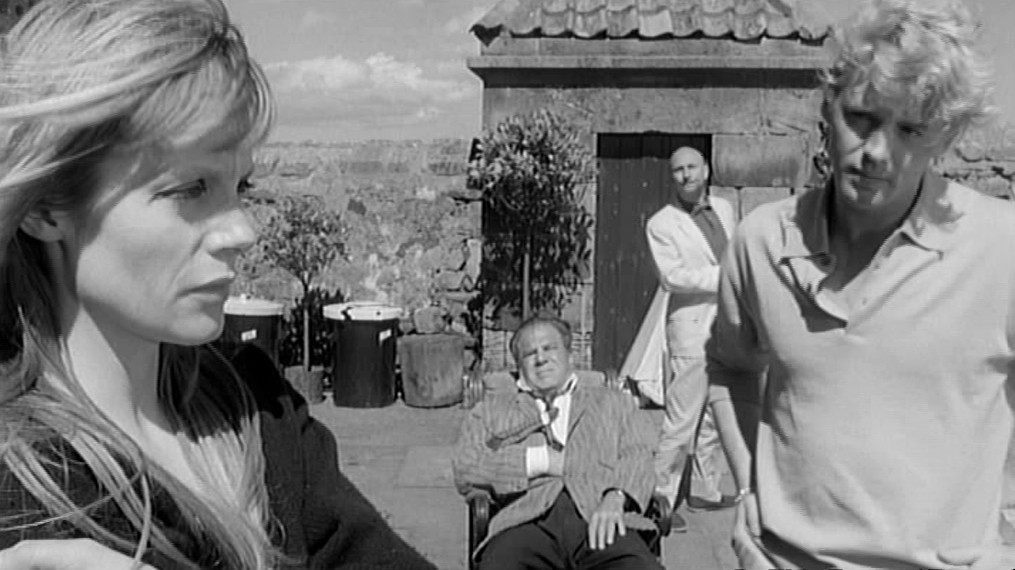
Françoise Dorléac, Lionel Stander, Donald Pleasence & Iain Quarrier, Cul-de-Sac, Roman Polanski
We see George, a wealthy Englishman who’s sold his business to pursue something more spiritual—love (the couple he forms with his French wife, Teresa), art (he paints), harmony with nature (the tidal island far from the city)—at once revelling in and resisting his own humiliation. And we see Teresa, casual in her contempt, giving no sign that she has any love to give him.
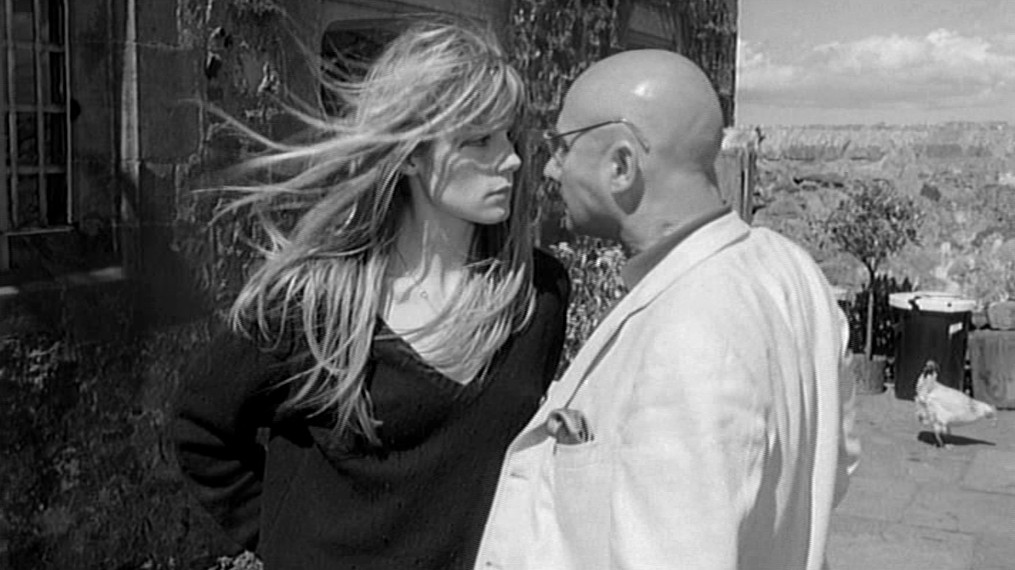
Françoise Dorléac & Donald Pleasence, Cul de Sac, Roman Polanski
So, if George’s humiliation (as the ending suggests) is the core of the film, is Teresa its source? Yes and no. Yes, if we assume one-way love is humiliating: she is indifferent to his love. No, if we remember that every entrance is also an exit: ‘At the beginning of a love affair one might ask What am I getting into? or What am I getting out of?’*. As George sits alone on the rock, the last word he utters is ‘Agnes’, the name of his first wife. What did he see himself getting out of when things ended with Agnes? What did he see himself getting into when they started with Teresa?
* Adam Phillips, Monogamy (London: Faber and Faber, 1996) p. 18
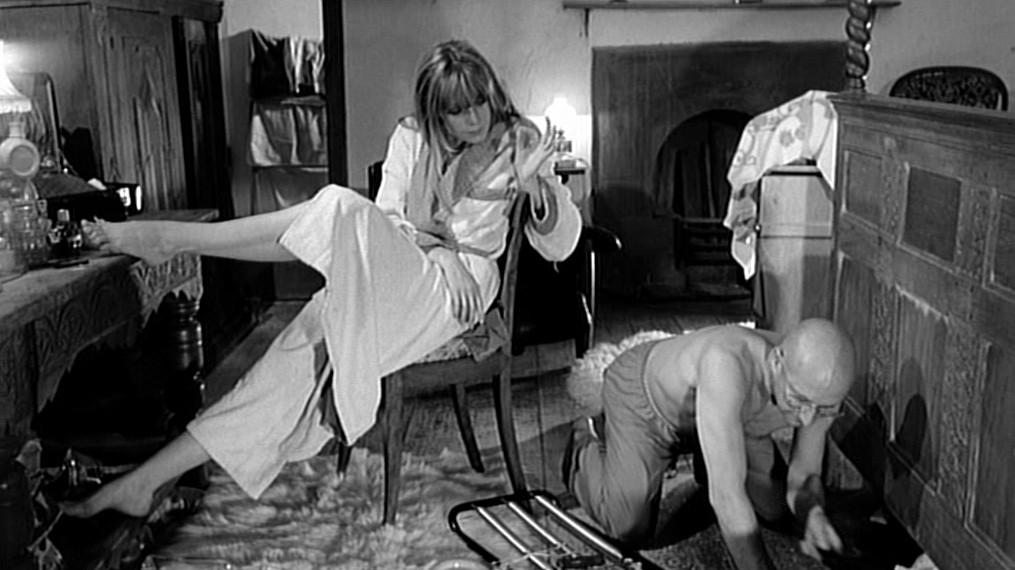
Françoise Dorléac & Donald Pleasence, Cul de Sac, Roman Polanski
As Cul de sac is interested in psychological situation, not explanation, we don’t know. Indeed, we are not privy to the couple’s secret—‘the secret the couple have to keep—mostly from each other—is what they are hiding from and that they are hiding’*—and therefore we cannot say that Teresa is the source of George’s humiliation. We can, however, say that she is its agent. Indeed, her casual disdain does nothing for his virility, and the sadomasochistic relationship he takes refuge in is—to an outsider—humiliating. George, I am suggesting, has made his bed and must lie in it (alone). Which leaves me free to turn to Teresa.
* Adam Phillips, Monogamy (London: Faber and Faber, 1996) p. 67
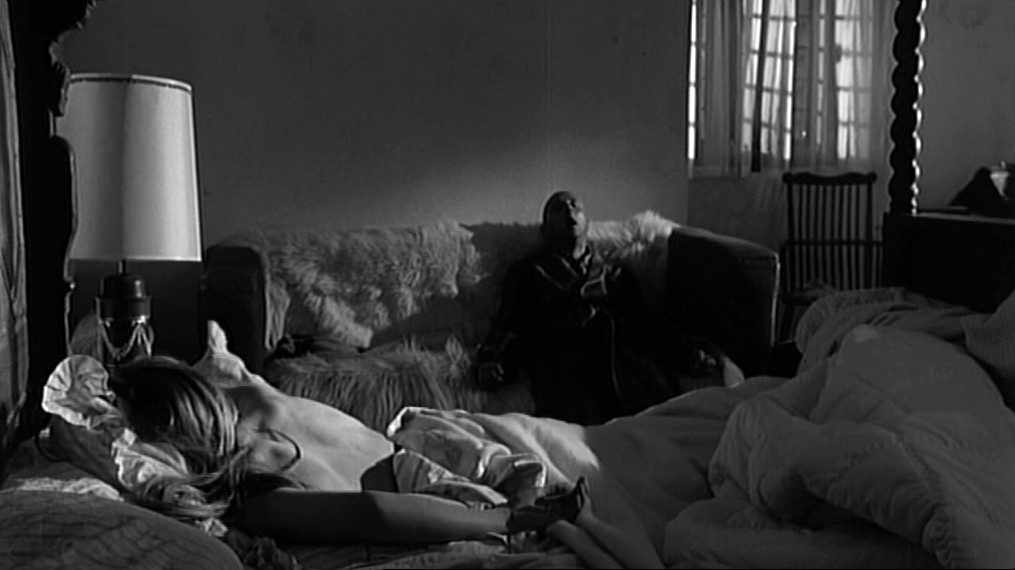
Françoise Dorléac & Donald Pleasence, Cul de Sac, Roman Polanski
In jeans and sweater, her long hair loose, she goes about barefoot, radiating a sexuality free of any artifice. There’s dignity in her self-containment, a child-like spontaneity in her boldness. She does what she pleases, she makes no demands; for her, yesterday and tomorrow are but abstractions. No wonder George fell for her: Seeking to abandon the cares of the world, what could be better than to live with a carefree woman? And yet we find him, at the end of the film, alone on a rock, wondering where it all went wrong.
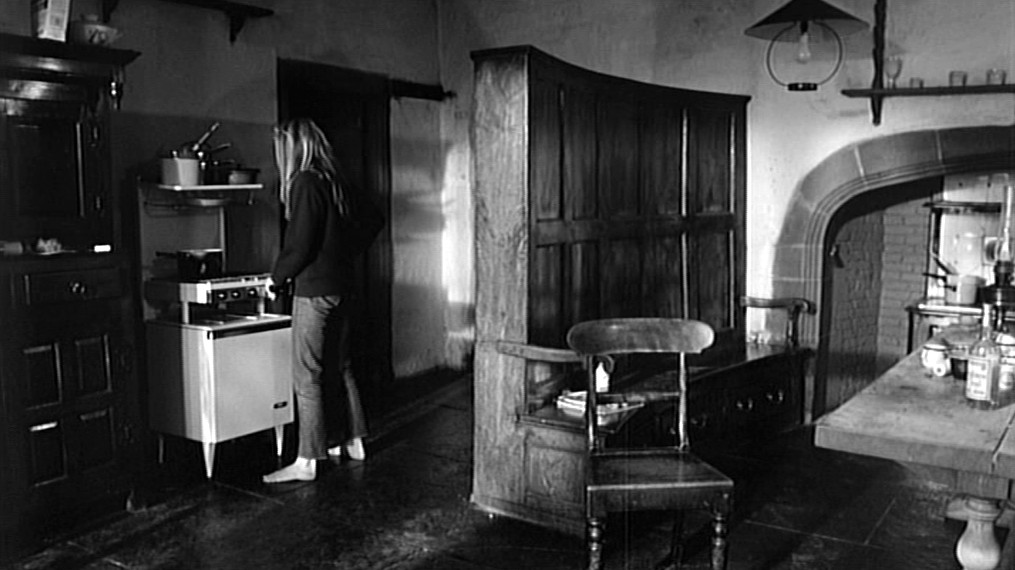
Françoise Dorléac, Cul de Sac, Roman Polanski
Did he forget the perils of passion, the asymmetry between man and woman? Did he forget that, structurally, women love only themselves*? And did he forget that the charm of his beloved lies precisely in her self-sufficiency? Head over heels in love with her, he did indeed forget. But Roman Polanski didn’t. And from this knowledge he fashioned a tragi-comic rendering of a man in love. Men can flex their biceps in protest, barricade themselves against poor George. But in their heart-of-hearts they know he is already inside them.
* Sigmund Freud, On Narcissism: An Introduction, in Freud’s ‘On Narcissism: An Introduction’, edited by Sandler, Joseph et al. (London: Karnac Books, 2012) p. 19
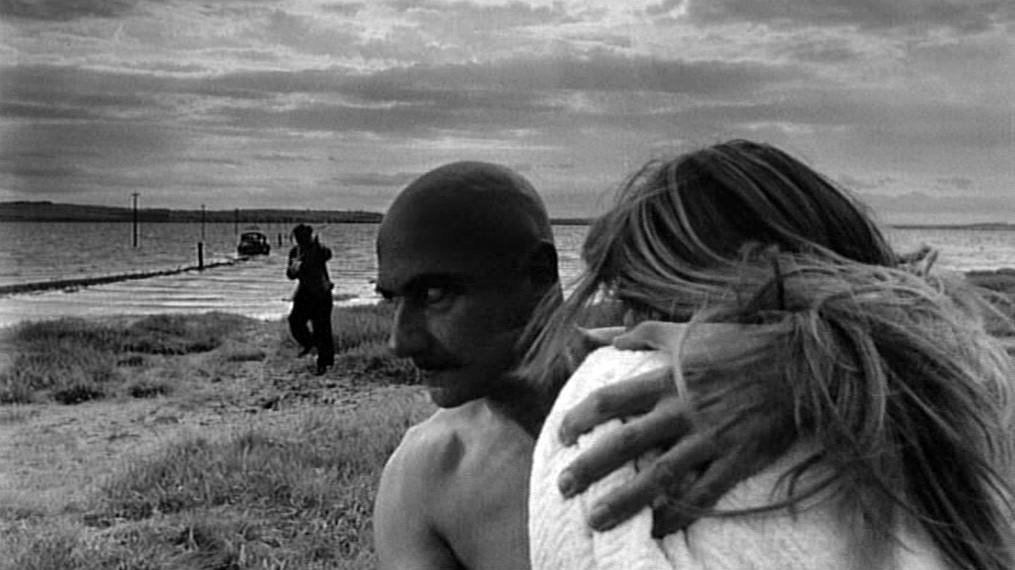
Donald Pleasence & Françoise Dorléac, Cul de Sac, Roman Polanski
MARA, MARIETTA: A LOVE STORY IN 77 BEDROOMS
A literary novel by Richard Jonathan
CUL-DE-SAC: A CAROUSEL OF STILLS, IN SEQUENCE
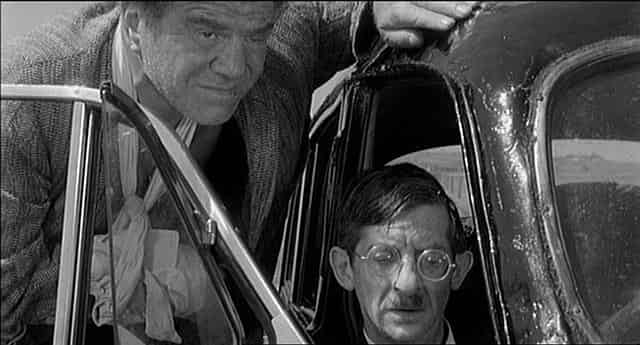
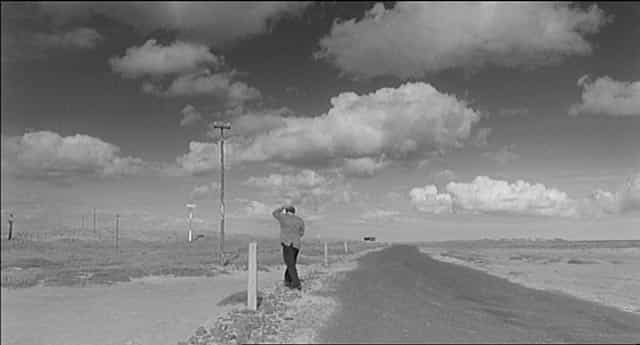
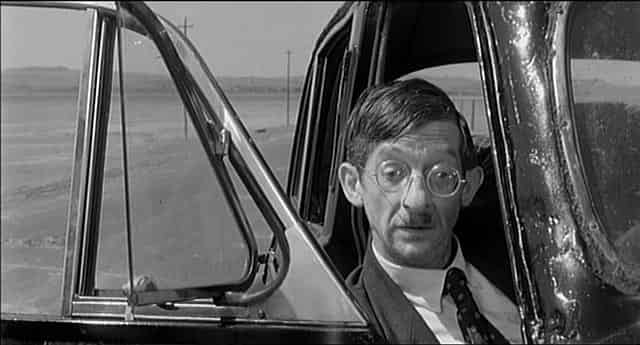
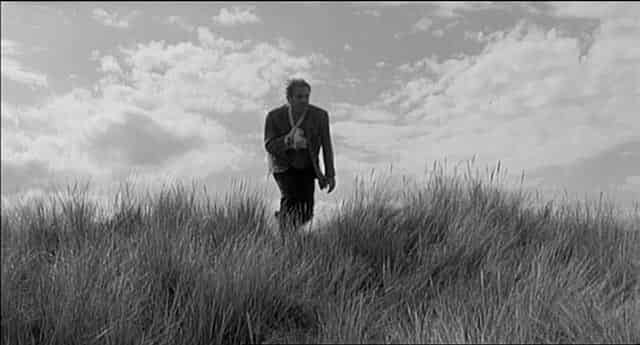
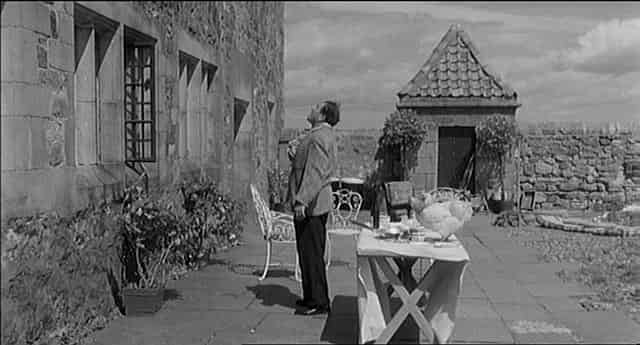
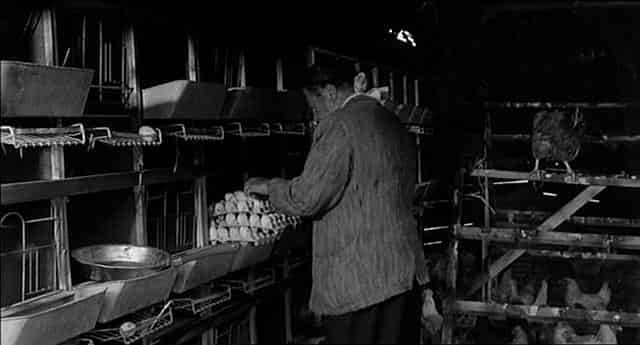
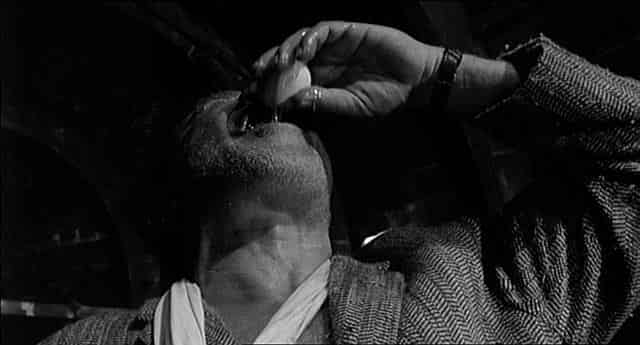
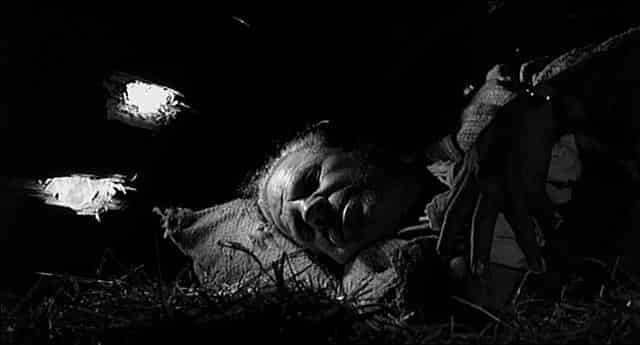
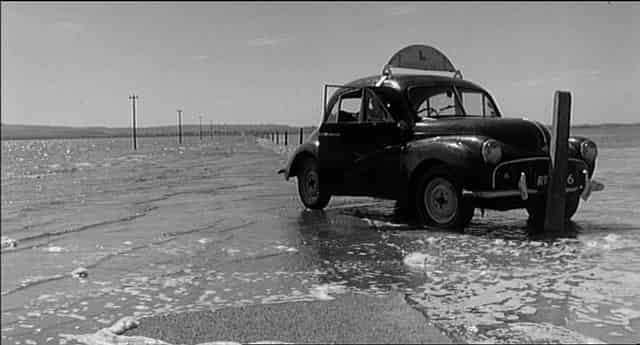
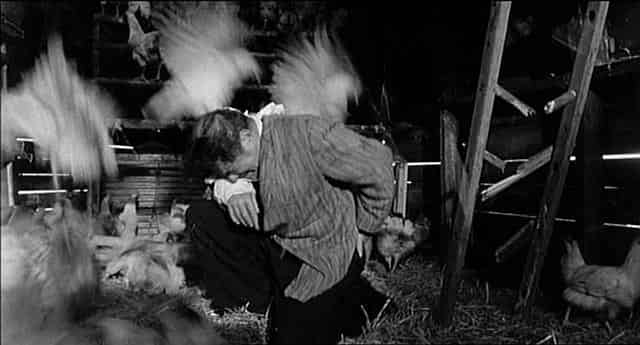
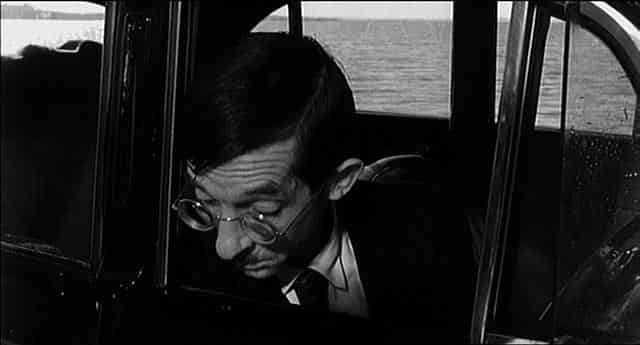
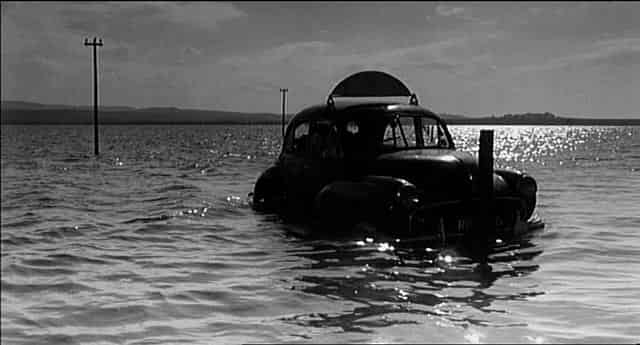
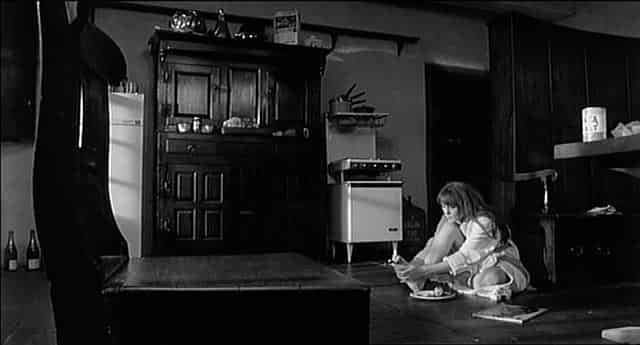
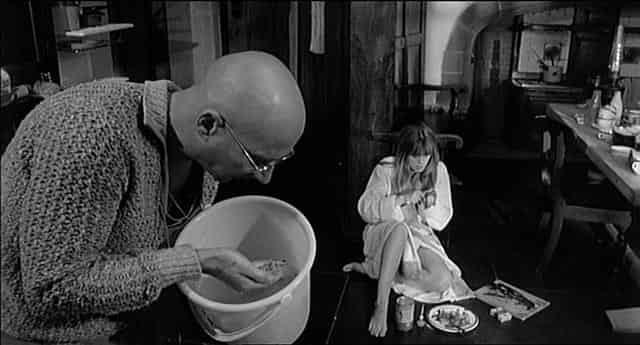
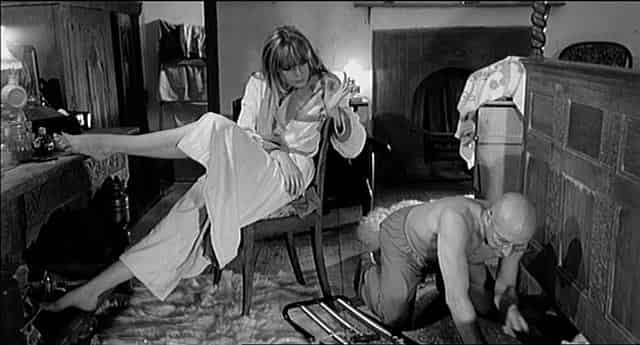
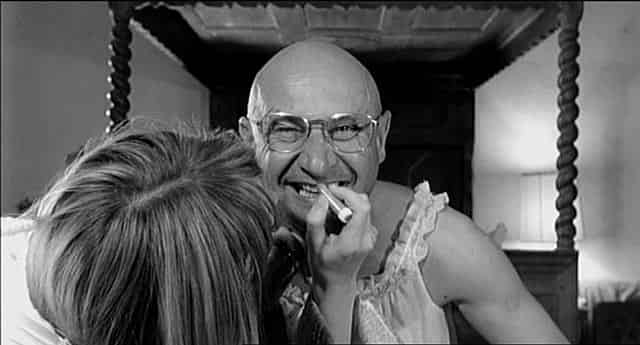
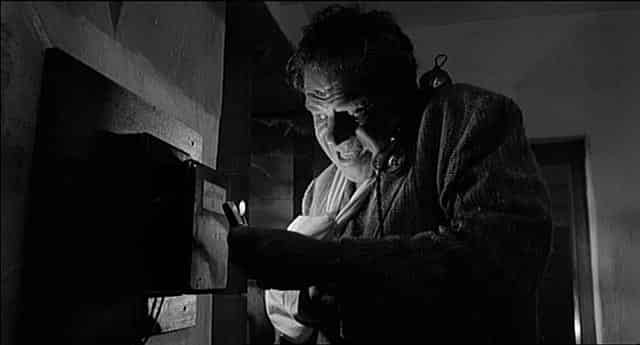
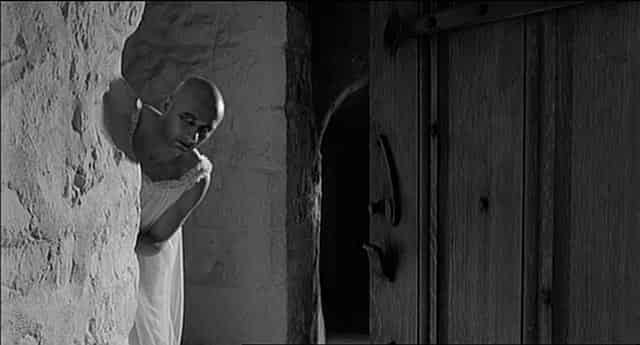
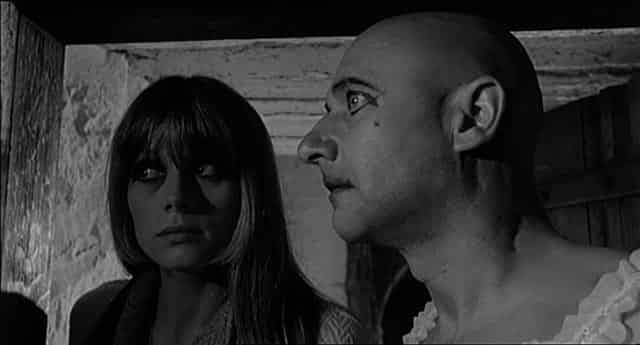
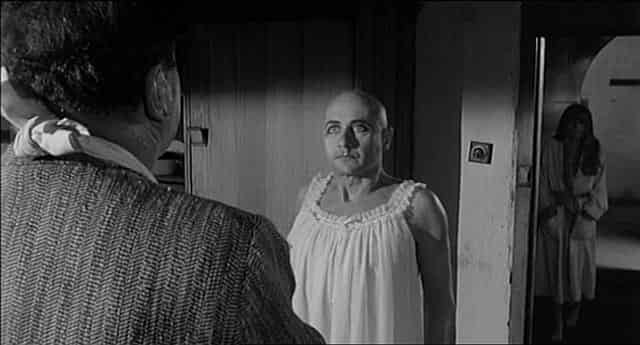
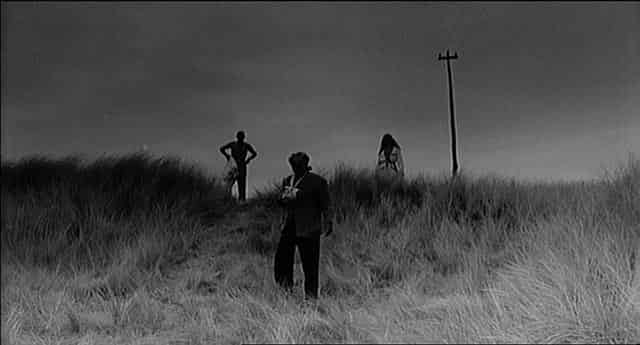
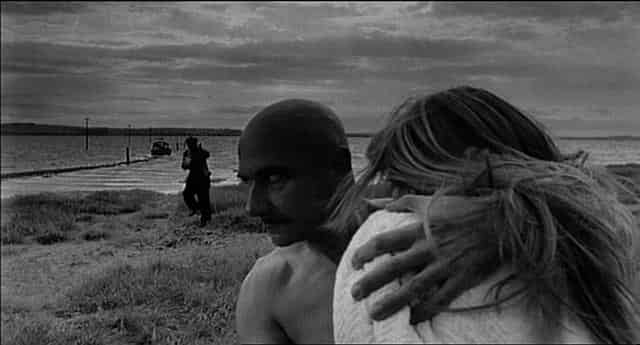
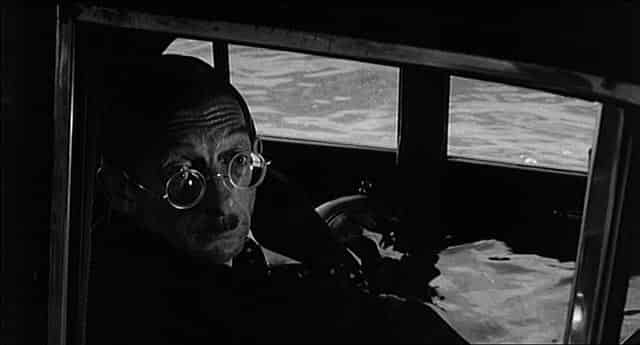
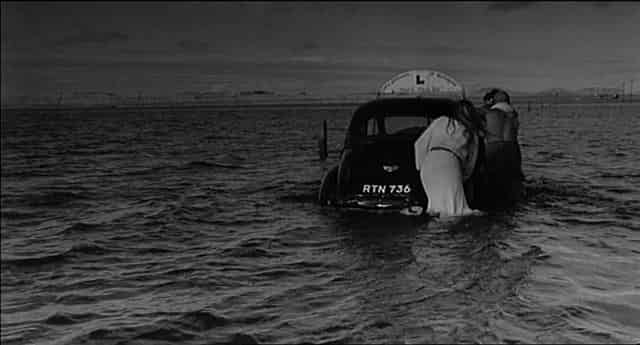
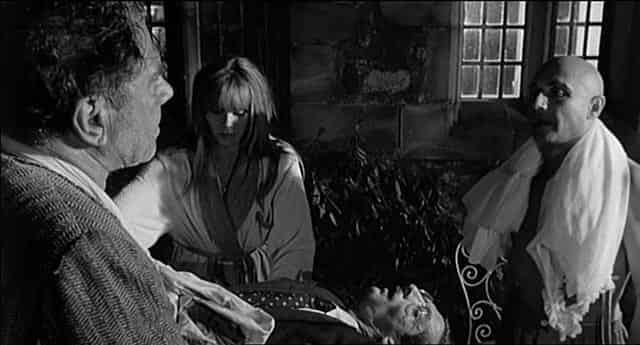
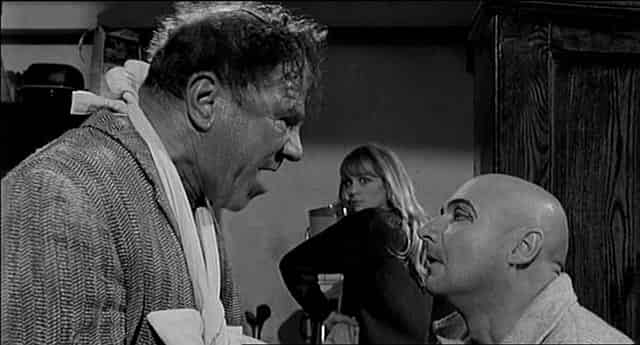
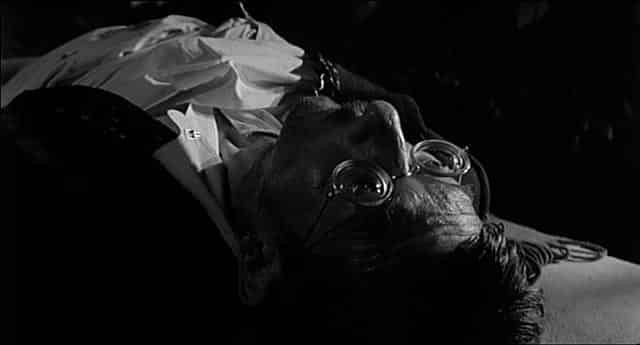
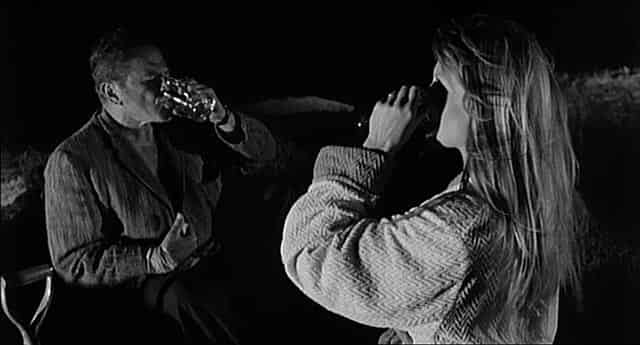
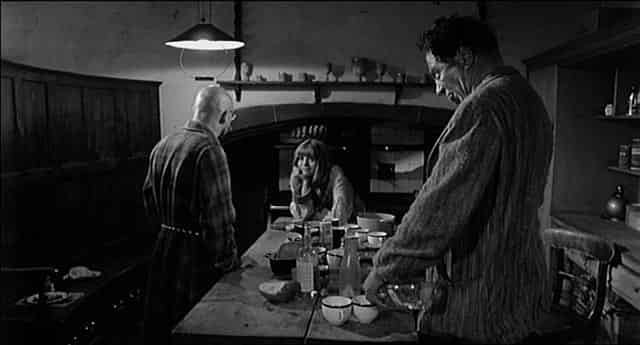
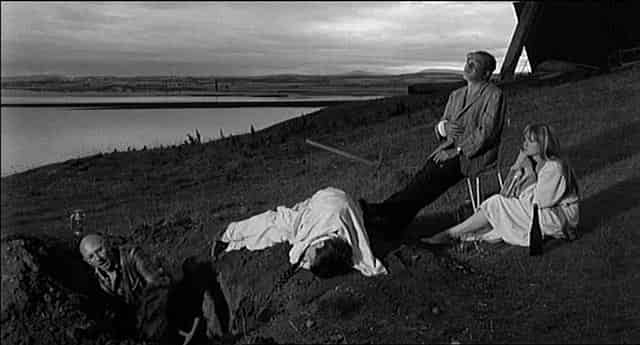
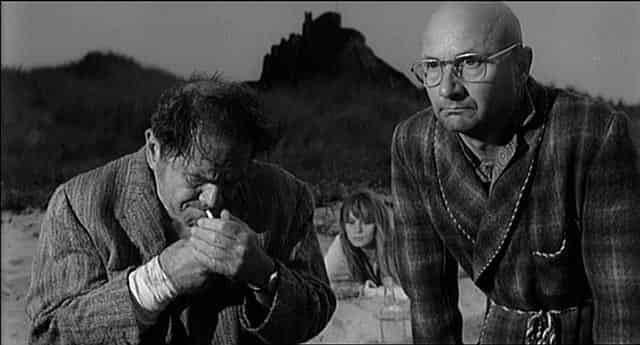
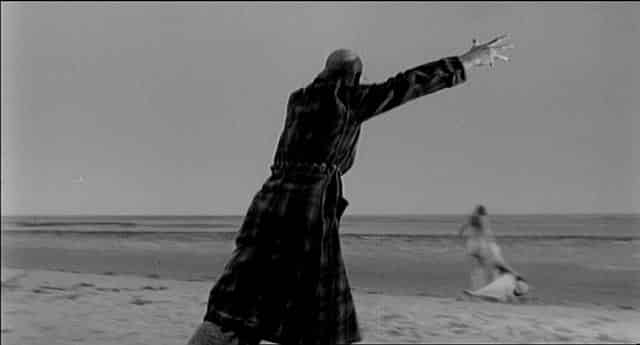
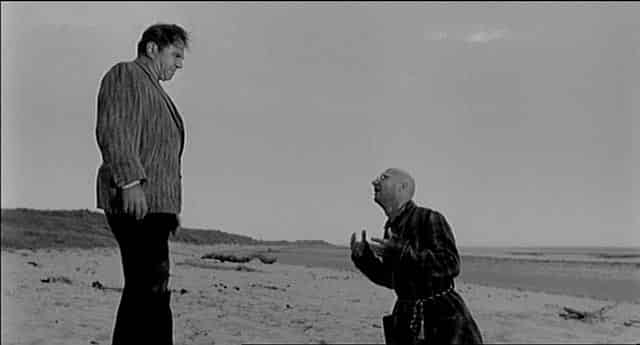
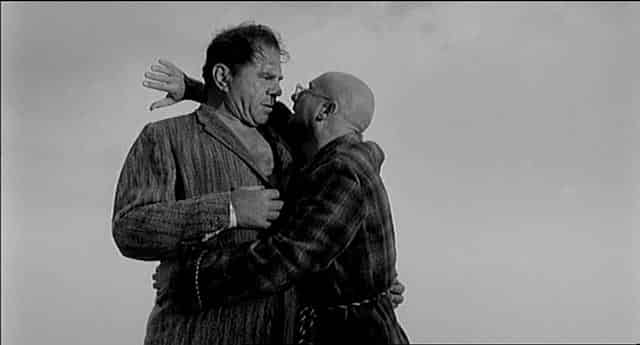
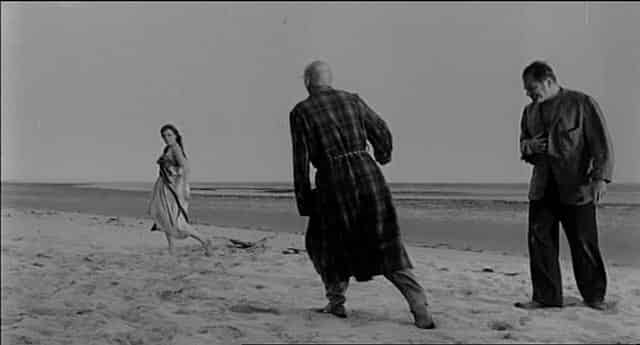
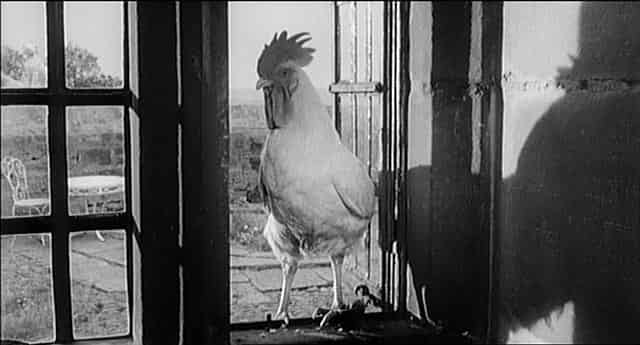
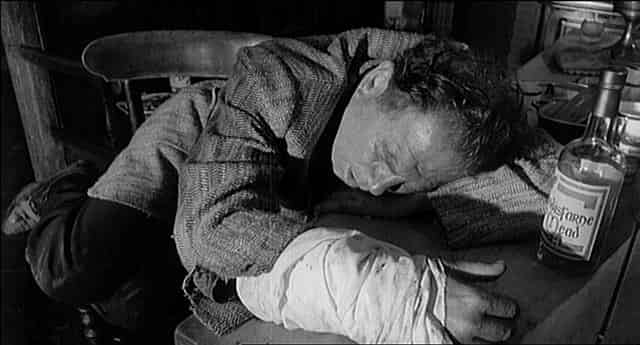
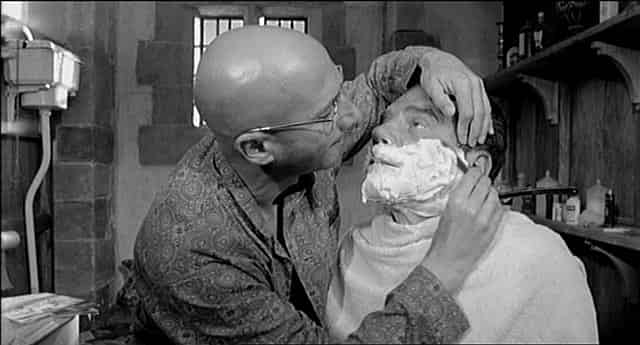
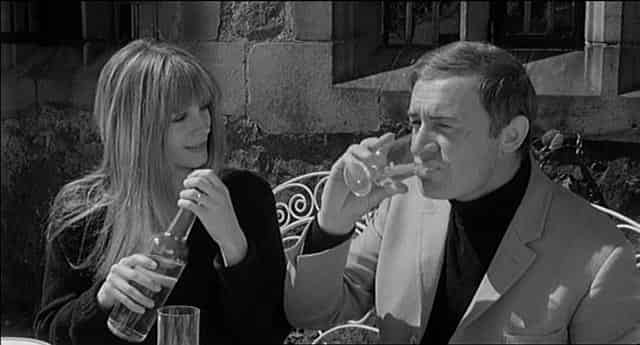
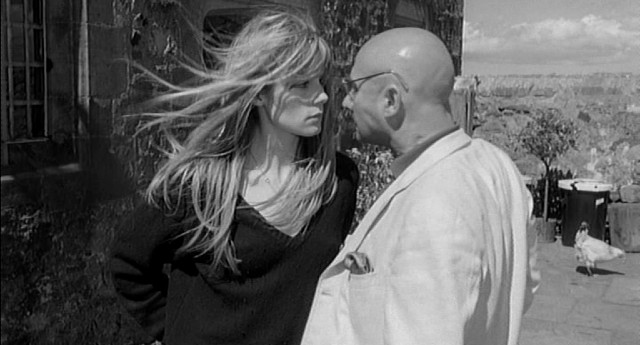
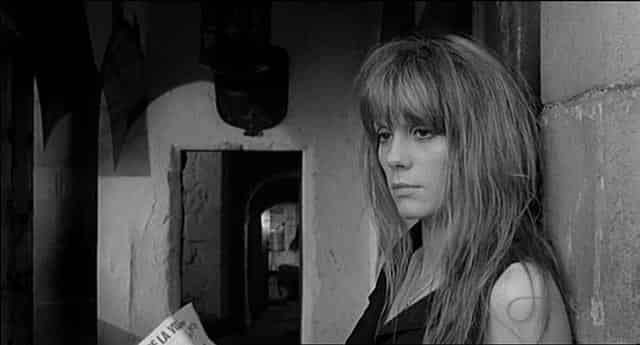
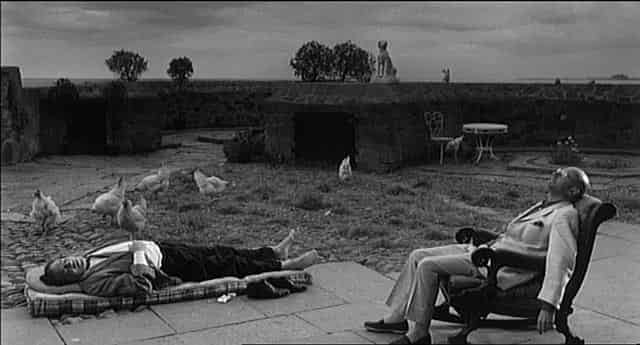
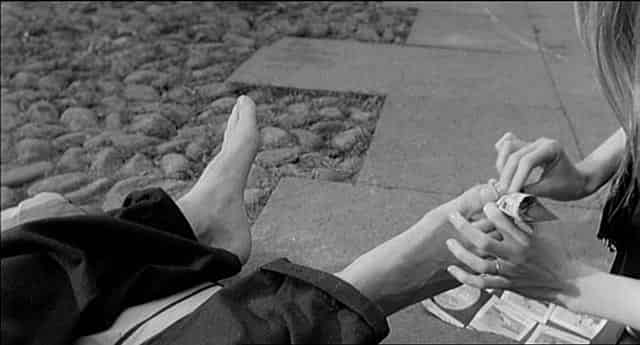
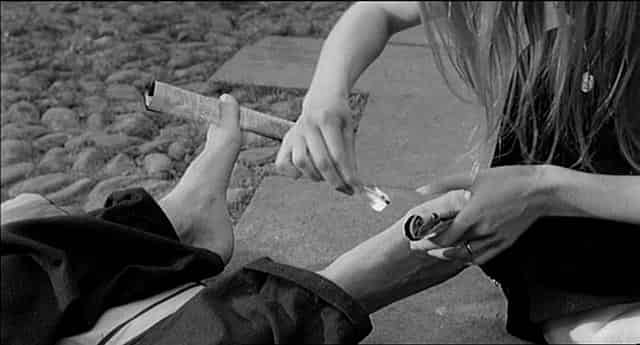
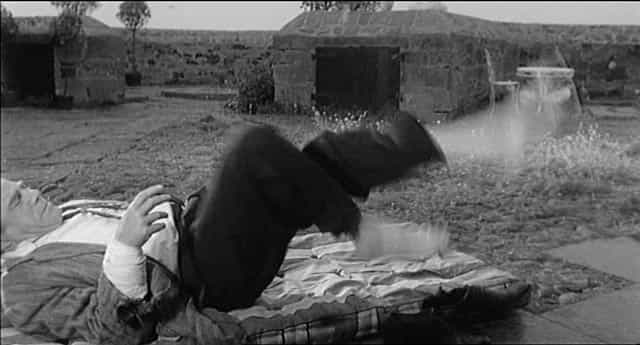
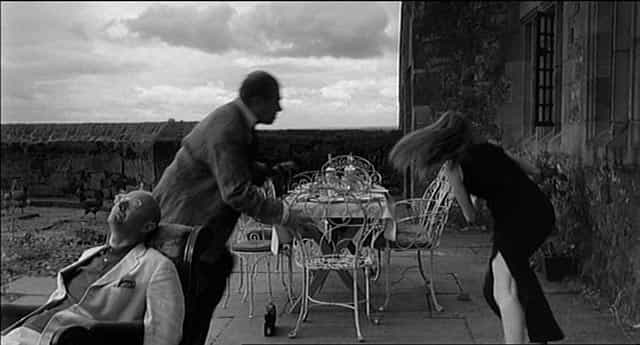
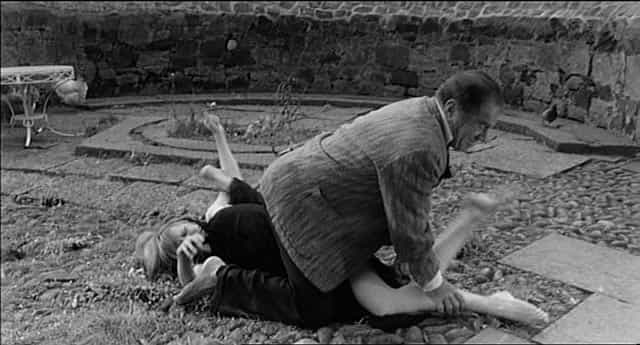
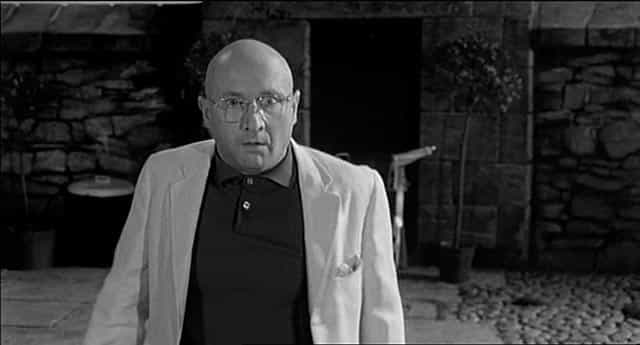
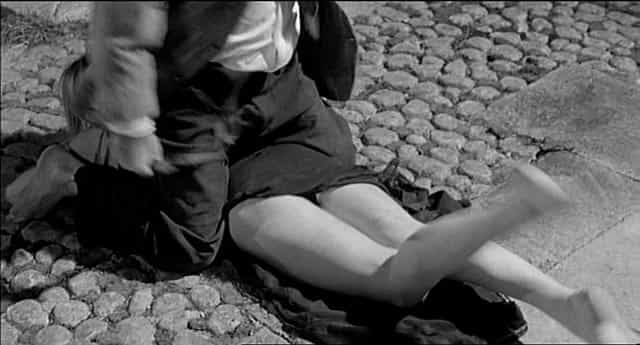
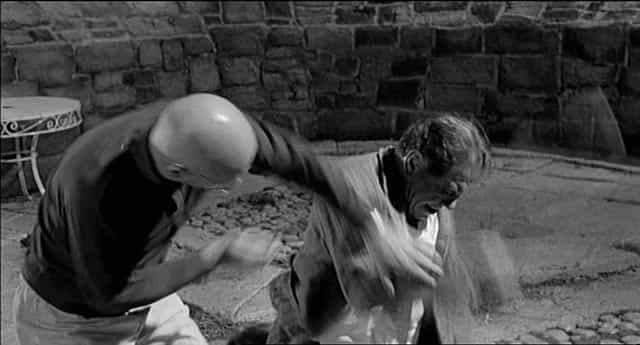
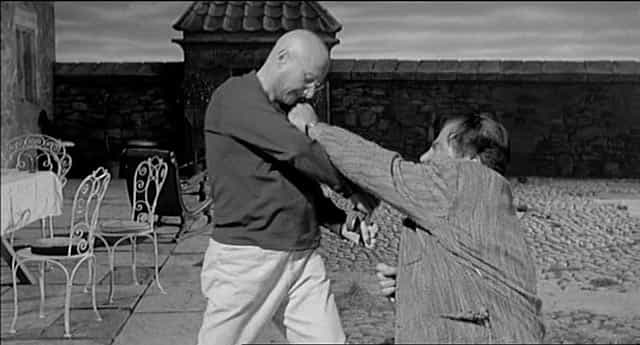
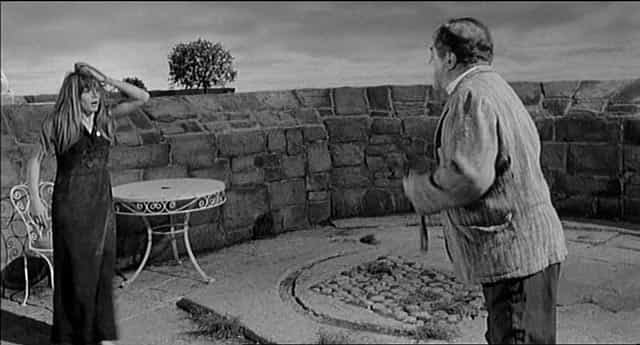
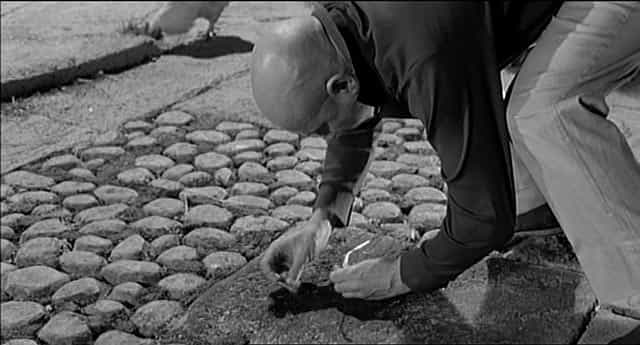
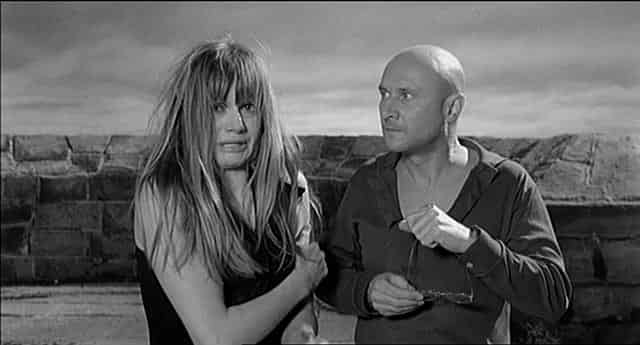
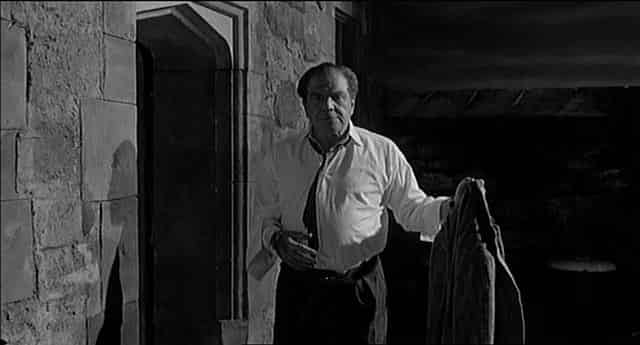
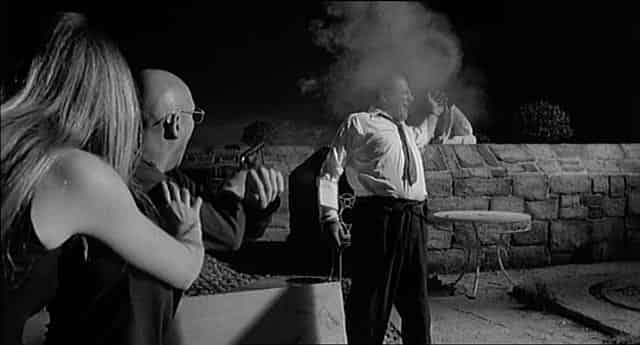
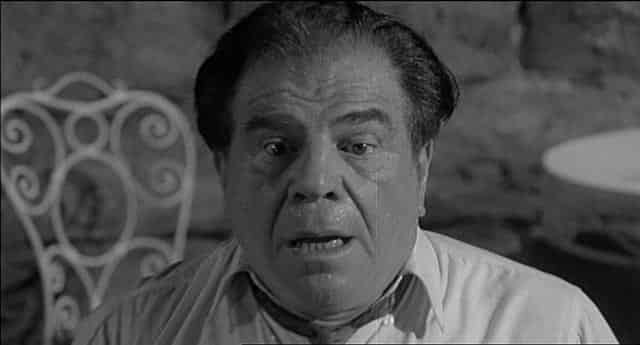
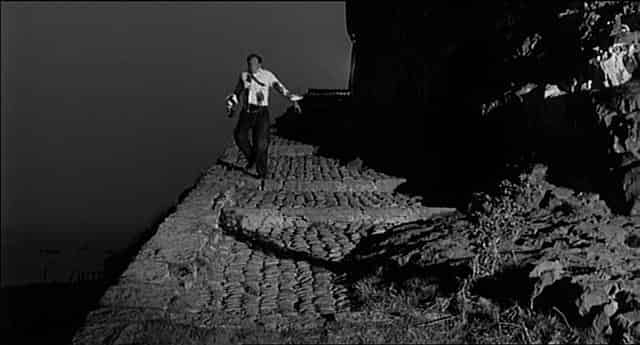
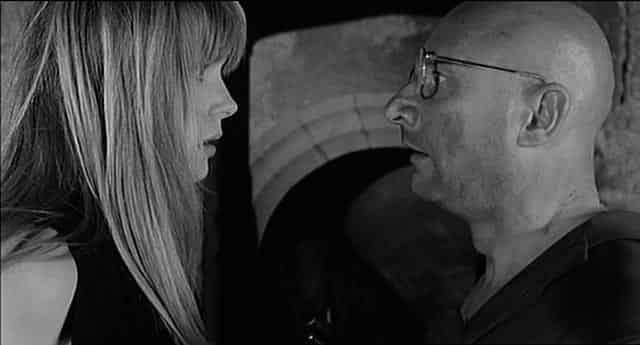
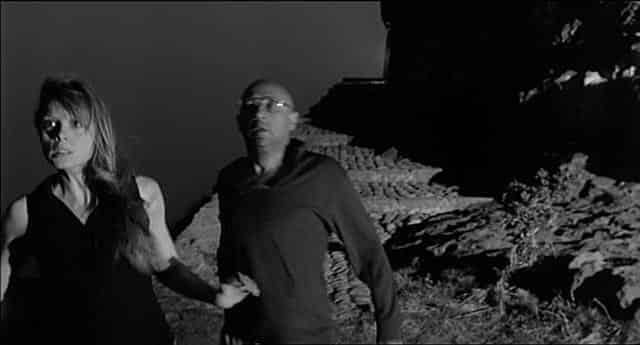
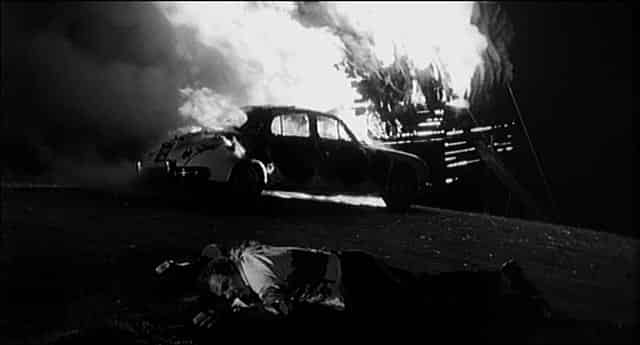
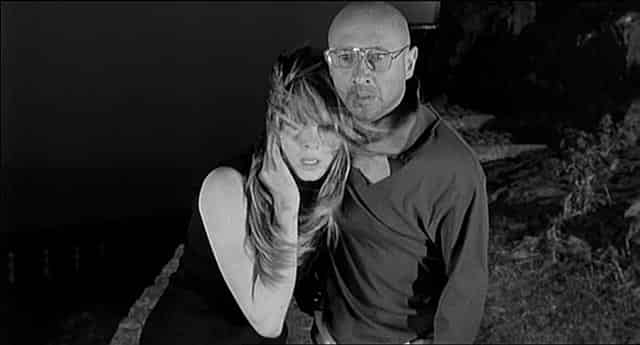
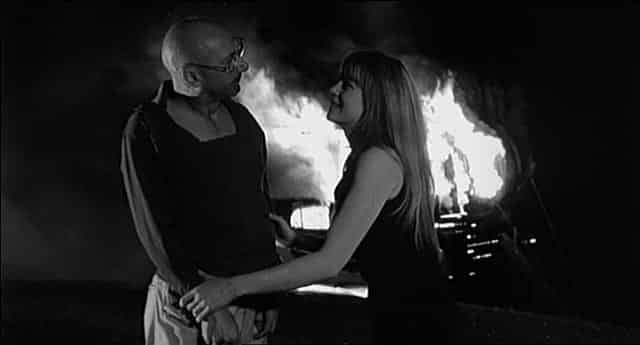
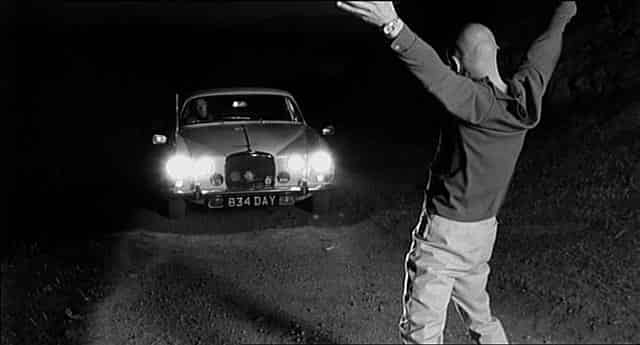
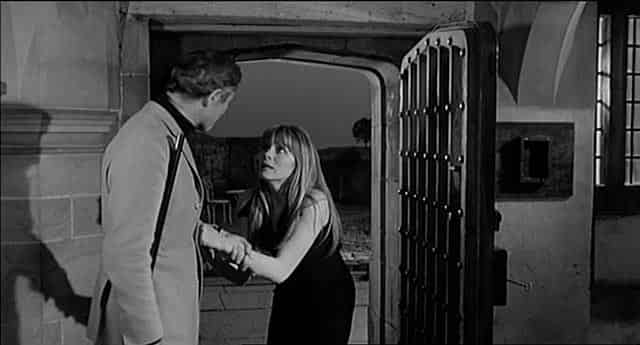
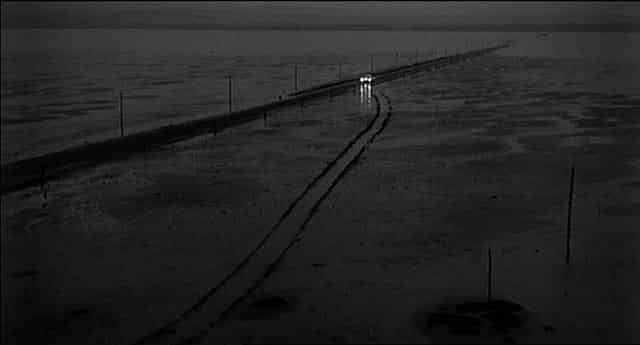
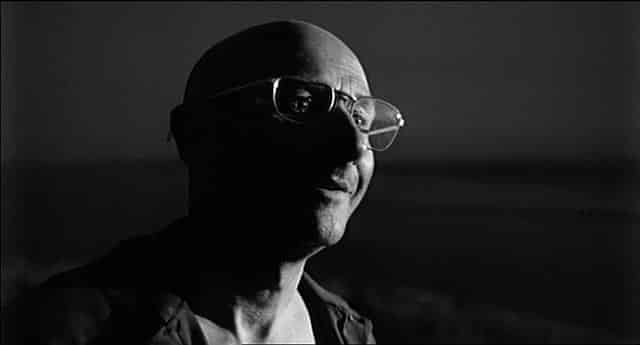
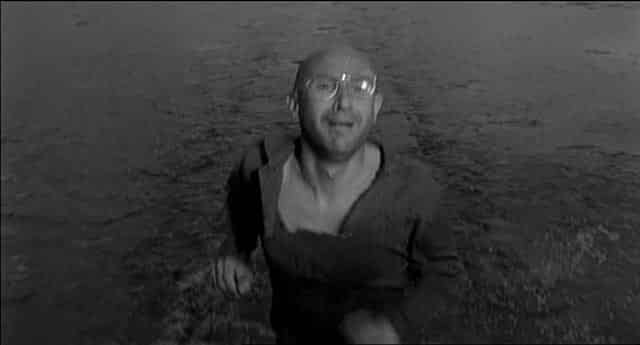
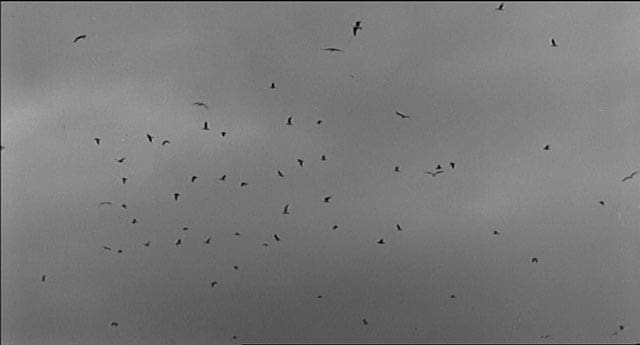
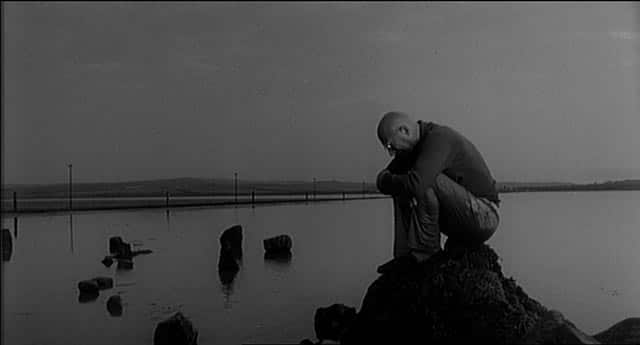
KRZYSZTOF KOMEDA: COMPOSER OF POLANSKI’S SIXTIES SOUNDTRACKS
Thomas Hischak
Abridged from Thomas S. Hischak, The Encyclopedia of Film Composers (NY: Rowman & Littlefield, 2015) pp. 406-07
You can listen to the tracks in full with a registered Spotify account, which comes for free.
Krzysztof Komeda (1931-1969) was a Polish musician and composer who scored two dozen feature films in his brief, nine-year movie career. He is most known for his scores for director Roman Polanski.
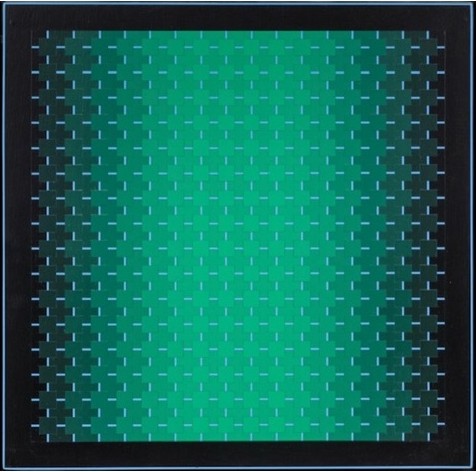
Julian Stanczek, Harmony Green, 1991
Komeda began piano lessons very early, studying at the Poznan Conservatory from the age of eight. Although he pursued musical activities in high school, after graduation he attended the local Medical Academy and received a diploma to practice medicine. He did not abandon his musical skills, however, and became particularly interested in jazz, playing with various groups in the 1950s, including his own Komeda Sextet. The Communist government was suspicious of jazz, but the Komeda Sextet became very popular across Europe and opened doors for modern jazz in the Eastern Bloc. Komeda toured the Continent, made some legendary recordings, and was soon internationally acclaimed as a leader of European jazz and its distinction from American jazz.

Julian Stanczek, Metaphor Five – 4, 1983
He became involved in movies when young director Polanski asked him to score his 1958 short Two Men and a Wardrobe. In 1960 Komeda scored his first feature movie but recognition for his screen music did not come until two years later with Polanski’s sexual thriller Knife in the Water. The two men would go on to collaborate on four other films: Cut-de-Sac, The World’s Most Beautiful Swindlers, The Fearless Vampire Killers, and Rosemary’s Baby. With other European directors he scored such movies as My Old Man, Hunger, Epilogue, Barrier, and The Departure. By the late 1960s Komeda was working in Hollywood. After completing the score liar The Riot, he died from complications from a head injury received when he fell during a drunken spree. Komeda was only thirty-seven years old and was mourned as one of the finest jazz pianists of his day. Since 1995 the Komeda Jazz Festival in Poland has been held annually in his memory. A German-Polish documentary about the musician-composer and his music, titled Komeda: A Soundtrack for a Life, was released in 2010.

Julian Stanczak, Melting in Late Color, 1972
Komeda was a very influential musician and composer in the world of international jazz and his screen music was just starting to be appreciated when he died. He was very active in the movies during the 1960s, scoring European and American films at the rate of three a year. In addition to his twenty-four features, Komeda wrote music for fourteen shorts. His best known scores in the States and Great Britain are those for the Polanski films. His breezy jazz score for Knife in the Water starts out carefree as the boat travels along with saxophone accompaniment. A later passage is a sexy cool jazz played on piano and saxophone. When events take an odd and deadly turn, the music is a pulsating, anti melodic march with various percussion instruments picking up the tempo.
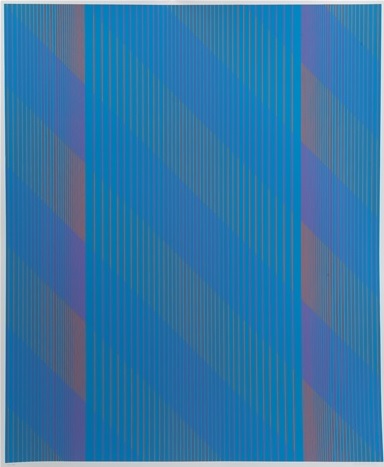
Julian Stanczek, Blue, n.d.
Komeda uses high-pitched woodwinds and brass for the main theme for the bizarre hostage melodrama Cul-De-Sac, the effect not unlike a mocking kazoo. There is a similarly satiric sound in the score for the stylish spoof The Fearless Vampire Killers. The main theme features a wordless chorus chanting an irreverent hymn with a rock beat, Some passages are lighthearted and casual like a television commercial, while the suspense theme recalls cheap 1950s horror music. Komeda also playfully uses some pseudo avant-garde music for this period movie with a very modern sensibility.
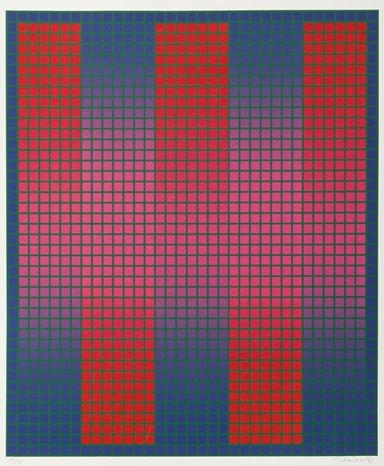
Julian Stanczek, Trespass ed. 105/175, 1980
An eerie lullaby is the most memorable aspect of the score for the satanic drama Rosemary’s Baby. It is a gentle theme that repeats variations of a simple musical phrase. The movie’s star, Mia Farrow, sings a series of ‘la-la-la’ chants over the strings and the effect is not so much comforting as haunting. A different kind of chanting is heard in the theme for the movie’s coven of devil worshippers. A wailing trumpet and abrupt strings play one of the film’s surreal passages, and the nightmare sequence in which Rosemary is impregnated by Satan is scored with a complex modern composition with sustained notes, screeching strings, and harsh rhythmic whispering. Rosemary’s Baby is a unique thriller in that it focuses on character rather than action and Komeda’s score is equally distinctive for its restraint and weird delicacy.
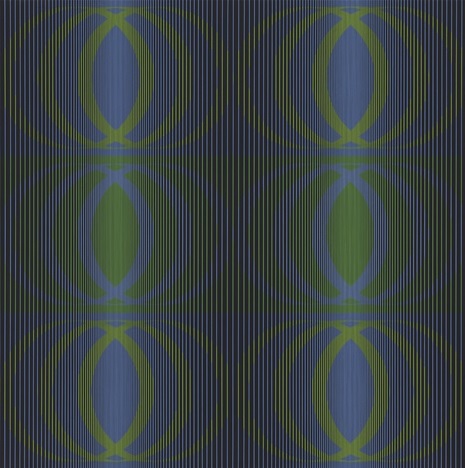
Julian Stanczek, Blink, 1972
The scores for Komeda’s non-Polanski movies are less known but often as fascinating. The character drama My Old Man has a lyrical yet rhythmic score that features different kinds of jazz. The zesty main theme, played on accordion and woodwinds, is carefree and engaging. A passage performed on a harmonica is equally spirited while a bluesy theme behind the scenes reminiscing about the past is a resigned but tripping saxophone solo.
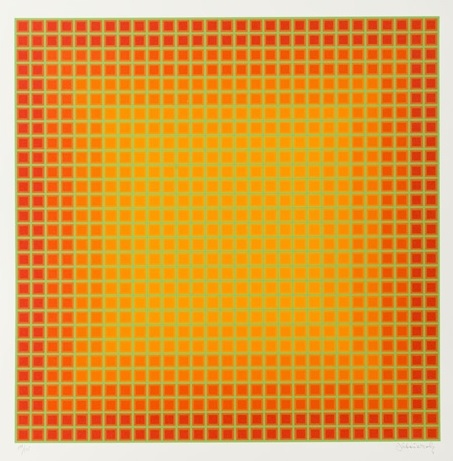
Julian Stanczak, Continual, 1979
Bill Medley sings the song ‘One Hundred Years’ (lyric by Robert Wells) on the soundtrack for Riot, an American film about a tragic prison break. It is an upbeat piece with a blues mentality but a felicitous tempo. The rest of the score also has that kind of complex nature, moving from harmonica to strings effortlessly.
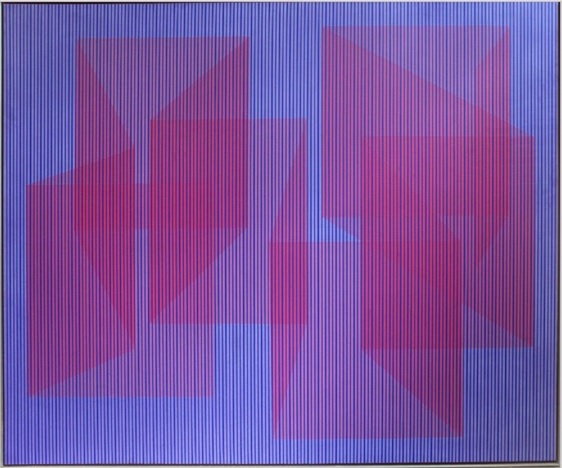
Julian Stanczek, Unfolding and the Rain, 1966
The score for Hunger, a Scandinavian movie classic of social realism, has a merry but cockeyed carousel waltz that leads into atonal sections filled with repetition and suspense. A wandering clarinet and piano fragments are used effectively in several scenes. Perhaps as in no other of Komeda’s film scores, jazz blends into various forms of background music in Hunger. Such a fine score is a painful reminder of what Komeda might have accomplished had his movie career and his life not ended so prematurely.
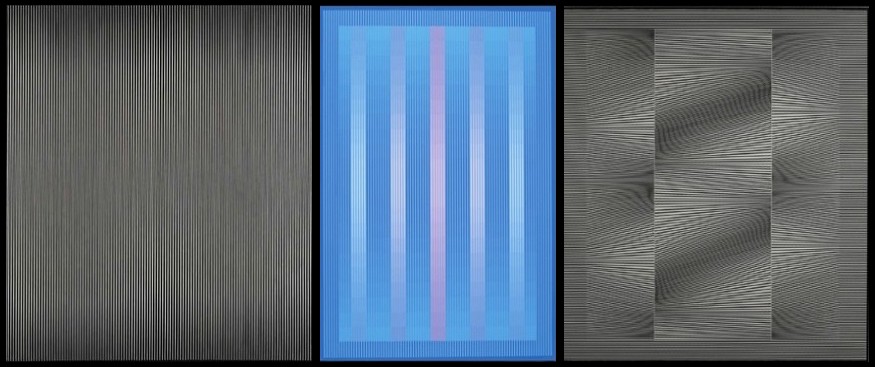
Julian Stanczek: Forest Undetected, 1967 | Blue Crystal, 1985 | Unrestful Space, 1966

